




“Our political system is designed for vigorous disagreement. It is not designed for irreconcilable contempt.”


THE
RFK

THE
WHY
60
DEPOLARIZING
TAKE






“Our political system is designed for vigorous disagreement. It is not designed for irreconcilable contempt.”


RFK

THE
WHY
60
TAKE
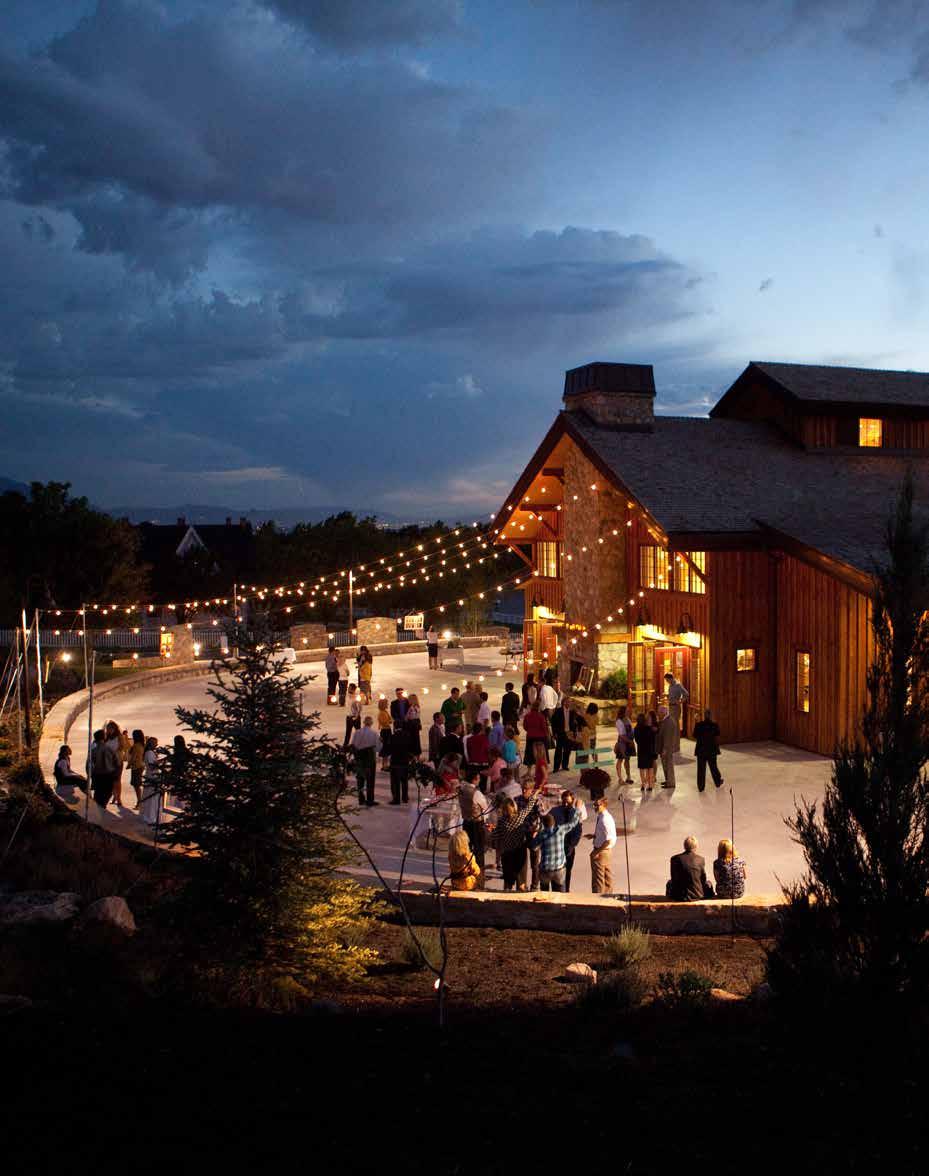
We have 11 perfect venues for your event.
THISISTHEPLACE.ORG/RENTALS

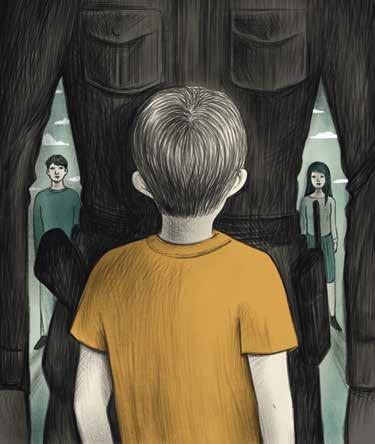





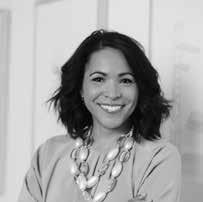

Klein is an author and columnist for The New York Times, where he also hosts “The Ezra Klein Show” podcast. He was a former columnist and editor at The Washington Post before he co-founded Vox, where he was also editor-at-large. An excerpt from his book “Why We’re Polarized” is on page 60.
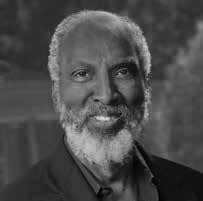
Biandudi Hofer heads HBH Enterprises, a media group that explores issues through a solutions oriented lens, and is a co-founder of Good Conflict. She is an award-winning journalist, documentary filmmaker and producer who has worked with CBS, NPR and PBS. Her essay on finding common ground is on page 40.

Cox is governor of Utah and chairman of the National Governors Association. He was elected as governor in 2020 after serving as lieutenant governor for seven years. He has been a state legislator, county commissioner, city councilman and mayor. His essay on disagreeing better is on page 36.
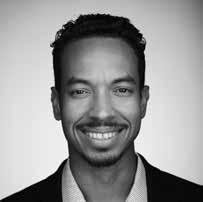
Powell is a professor of law, African American studies and ethnic studies at the University of California, Berkeley, and the director of the Othering and Belonging Institute. His most recent book is “Racing to Justice: Transforming our Concepts of Self and Other to Build an Inclusive Society.” His essay is on page 42.
A leading expert on helping democracies improve, Kleinfeld is a senior fellow at the Carnegie Endowment for International Peace. Before joining Carnegie, she spent a decade co-founding and directing the Truman National Security Project. The author of three books, her essay on reducing political polarization is on page 38
Wood is national ambassador for Braver Angels, a former GOP nominee for Congress and past vice-chairman of the Republican Party of Los Angeles County. An opinion columnist for USA Today, he also speaks on issues of political and racial reconciliation. His commentary on bridging differences is on page 15.

In one of American cinema’s more haunting scenes, two cars careen toward a cliff in the 1955 coming-of-age drama “Rebel Without a Cause.” The game of chicken means the first driver to bail before the cars barrel over the cliff loses. The film’s famous scene ends in tragedy.
“As played by irresponsible boys,” the British intellectual Bertrand Russell once observed, “this game (of chicken) is considered decadent and immoral, though only the lives of the players are risked.” But, he continued, when such games are played “by eminent statesmen” or politicians, too often they’re considered displays of “wisdom and courage.”
Increasingly, the nation’s political parties are caught in what seem like perpetual games of chicken as each party seeks advantage over the other with no intention to swerve first. Whether the issue is national debt, immigration, health care or national defense, the focus of each party is as much about humiliating the other party as it is about crafting bipartisan policies that work for the vast majority of Americans.
While there’s certainly wisdom in competing parties serving as a check on one another and providing a robust contest of ideas, the levels of contempt and political brinksmanship in recent years is corroding the country and putting the union itself at risk.
In this special double issue of Deseret Magazine, we’ve assembled a variety of preeminent thinkers actively seeking to address America’s polarization problem.
Hélène Biandudi Hofer, journalist and co-founder of Good Conflict, points to the power of story to change our perspective and bring us closer together (page 40). John Wood Jr., a national leader
with Braver Angels, details why Americans need to start seeing each other as family rather than foe (page 15).
Gov. Spencer Cox, Utah’s 18th governor, details his nationwide “Disagree Better” initiative, launched as Cox serves this year as president of the National Governors Association (page 36).
Ezra Klein (page 60) and Rachel Kleinfeld (page 38) outline discrete actions individuals can take to depolarize while Yascha Mounk points to how lowering the stakes of political competition might lead to more unity (page 64).
Hyrum Lewis explores the myth of the left and right (page 52), and Michael Mooney provides a window into the controversial presidential candidate Robert F. Kennedy Jr., whose run for office represents a swath of Americans whose political lines are increasingly scrambled in ways that don’t easily fit in the Republican-Democrat paradigm (page 46).
The takeaway: There is a path out of the perpetual game of chicken. It won’t be easy, but it starts with each American. It starts with more constructive dialogue, better disagreeing, more listening and understanding, and individual decisions to treat our political opponents with greater dignity and trust, or, in the words of Wood, like they’re family.
As Abraham Lincoln asserted, perhaps naively, at the nadir of the nation’s polarization on the brink of civil war: “We are not enemies, but friends. We must not be enemies. Though passion may have strained, it must not break our bonds of affection.”
This issue offers the hope that such bonds of affection are still within our reach.
LOIS M. COLLINS, KELSEY DALLAS, JENNIFER GRAHAM
ART DIRECTORS
IAN SULLIVAN, BRENNA VATERLAUS
COPY EDITORS
SARAH HARRIS, VALERIE JONES, LOREN JORGENSEN, CHRIS MILLER, TYLER NELSON
DESERET MAGAZINE (ISSN 2537-3693) COPYRIGHT © 2024 BY DESERET NEWS PUBLISHING CO. IS PUBLISHED MONTHLY EXCEPT BI-MONTHLY IN JULY/AUGUST AND JANUARY/FEBRUARY BY THE DESERET NEWS, 55 N 300 W, SUITE 400, SALT LAKE CITY, UTAH. TO SUBSCRIBE VISIT PAGES.DESERET.COM/SUBSCRIBE. PERIODICALS POSTAGE IS PAID AT SALT LAKE CITY, UTAH
POSTMASTER: PLEASE SEND ADDRESS CHANGES TO PO BOX 2220, SALT LAKE CITY, UTAH 84101.
PUBLISHER
BURKE OLSEN
CHIEF FINANCIAL OFFICER
DAVID STEINBACH
VICE PRESIDENT MARKETING
DANIEL FRANCISCO
SENIOR VICE PRESIDENT SALES
TRENT EYRE
VICE PRESIDENT SALES
SALLY STEED
PRODUCTION MANAGER
MEGAN DONIO
OPERATIONS MANAGER
BRITTANY M C CREADY
DIRECTOR OF CIRCULATION
SYLVIA HANSEN
THE DESERET NEWS’ PRINCIPAL OFFICE IS 55 N. 300 WEST, STE 400, SALT LAKE CITY, UTAH.
COPYRIGHT 2024, DESERET NEWS PUBLISHING CO. ALL RIGHTS RESERVED. PRINTED IN THE USA.
PROPOSED AS A STATE IN 1849, DESERET SPANNED FROM THE SIERRAS IN CALIFORNIA TO THE ROCKIES IN COLORADO, AND FROM THE BORDER OF MEXICO NORTH TO OREGON, IDAHO AND WYOMING. INFORMED BY OUR HERITAGE AND VALUES, DESERET MAGAZINE COVERS THE PEOPLE AND CULTURE OF THAT TERRITORY AND ITS INTERSECTION WITH THE BROADER WORLD.


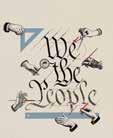

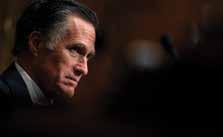
The NOVEMBER issue served as a primer for the 2024 presidential election season. An exclusive excerpt from McKay Coppins ’ biography of Sen. Mitt Romney, who stunned voters and political observers on both sides of the aisle by announcing he will not run for a second term, revealed how the 2012 GOP presidential nominee’s faith defined his political career and may have ended it (“The Making of Mitt Romney”). But reader Shane Doyle disagreed with that premise. “What brought it to an end was that people voted for a conservative, only to discover he’s a liberal in disguise. Most of the people in Utah, especially those who voted for him, will be happy to see him gone. And please, Mitt, don’t come back.” Others were conflicted over Romney’s tenure in the Senate. “Even though I am disappointed in some of Mitt Romney’s political actions or inactions in Congress, I am very impressed with this excerpt and book by McKay Coppins,” Boyd Nuttall wrote. “The political decisions and choices (Romney) made in the past are behind him. He can start a new life in a year … and I wish him and his family well going forward.” Our cover story focused on faith, exploring how it has informed the Republican, Democratic and independent men and women seeking the highest office in the land (“Faith and the Candidates”). Many readers questioned the religious sincerity of those running — some of whom have dropped out of the race since our story published — and whether faith should be a factor in deciding who to vote for. “I don’t trust politicians. They will say whatever they have to say to get elected,” wrote Dennis Hobb. “But it would sure be nice if we could find some who have the moral courage to be honest. To me that is what matters and what is so elusive in politics today.” An issue that neither Congress nor the White House seems willing or able to tackle is deficit spending that contributes to mounting government debt. Economist Michael Kofoed’s essay argued that the House and Senate must reclaim their authority over spending from the executive branch if they want to reign in deficits (“Power of the Purse”). Reader Jim Fikar sees another solution that goes beyond the beltway. “The only way to change things is to get big money out of politics. … Our Congress will do the wrong things for America and Americans if they conflict with the wishes of their big money donors. They are virtually taking bribes to sell out the best interests of our country and its citizens. That should be illegal.”
“I don’t trust politicians. They will say whatever they have to say to get elected.”


AGAINST ALL ODDS
HERON ISLAND, QUEENSLAND, AUSTRALIA
PHOTOGRAPHY BY HANNAH LE LEU
A Green Sea Turtle hatchling cautiously surfaces for air to a sky of hungry birds. This hatchling must battle through the conditions of a raging storm while evading a myriad of predators.
Not only has a tropical storm brought out thousands of circling birds, but there are also patrolling sharks and large schools of fish on the hunt for baby turtles. Only 1 in 1,000 of these hatchlings will survive.
IMAGE FROM VITAL IMPACTS


What was the moment that made you want to bridge the divide?”
The first time I remember being asked that question was in a meeting of Braver Angels leadership, several years ago. Braver Angels, for which I serve as national ambassador, is America’s largest grassroots organization dedicated to the depolarization of American politics and civil society. In searching my memories for a moment that might explain my passion, I rewound past my campaign for California’s 43rd Congressional District, past my early forays into political activism, past arguments in college and high school, past Barack Obama versus the tea party movement, George Bush and 9/11, Bill Clinton and Monica Lewinsky.
Finally, my mind fell upon a memory that it had not touched for many years. A memory of myself as a little boy listening to my mother and father screaming at each other in our living room, as they too often did. A memory of myself rushing to stand in the space between them, covering my ears with my hands and pleading with them to stop screaming at each other.
My parents’ differences did not arise out of politics per se. But being from not just different races but from different classes, different regions, different generations and different ways of seeing the world, their divisions clashed in ways that proved irreconcilable. Like many children who find themselves the victims of divorce, my brother and I found ourselves locked in a cold war between Mom
and Dad for years. But for all of their differences with each other, their love for their children was beyond question.
This led me to wonder to myself, how could two people with so much love inside of them fail to love each other? The villain, I decided, was in some deep misunderstanding. The antidote was in understanding. I carried this attitude with me throughout life right into politics. So in an age where Democrats and Republicans view each other as the enemy, I cannot help but see them as merely Mom and Dad.
I shared that perspective on the campaign trail in 2014 as California’s youngest active nominee for Congress and running against incumbent Rep. Maxine Waters. Whether I was speaking to a predominantly white tea party club in South Bay, L.A. County, or to a predominantly Black and Democratic leaning church in South Central Los Angeles, the question of my qualifications for representing such a complex community would arise. My answer to all audiences began with my life experience.
“I come from an interesting family background,” I would say. “My mother is a liberal Black Democrat from inner-city Los Angeles, and my father is a conservative white Republican from Tennessee. I grew up explaining my mother to my father and my father to my mother and that’s why I think I can represent all of you.”
I didn’t win that race, but I have spent most of my 37 years in and around politics with a singular, overarching goal: normalizing understanding and rebuilding trust between combatants across the partisan divide. I am not the only one. Though we live in an age defined by deepening distrust exacerbated by new technologies, bad incentives and genuine challenges domestically and around the globe, a modest movement of Americans representing organizations, platforms and communities from every corner of the country are trying to reset the table.
Many of us in that movement believe if we can understand the humanity underlying our differences we can remember how to love each other. The Rev. Martin Luther King Jr. taught that agape love (God’s love) was a spiritual power that could affect social transformation. It was this spirit that powered the mainstream of the civil rights movement.
But love is an axiomatic commitment. If America is to move to the next chapter of her story, we must think of America as a family — a family that through love and goodwill can hold together.
We are divided by politics, race, class, generations and many things that cast a dark shadow upon the future of the American experiment. Each is its own part of the riddle. But the answer to this deep societal cancer of polarization must begin with a certain remembrance — that we as Americans are like a family. We didn’t choose each other. But we can choose to love each other. For no family can stand if it does not remember to love.
JOHN WOOD JR. IS A NATIONAL LEADER FOR BRAVER ANGELS AND A FORMER VICE CHAIRMAN OF THE REPUBLICAN PARTY OF LOS ANGELES COUNTY.CREDIT CARD DEBT is an ever-present worry for millions of Americans. The average cardholder carries around $6,000 in debt, enough to pay for a few months’ rent most anywhere in the country. But those everyday worries and spending habits soar to meteoric heights during the holiday season. In 2022, the average consumer spent more than a thousand dollars on holiday related purchases — about 70 percent of which was paid through credit cards. And with credit card debt now at an all-time high of more than $1 trillion across the country, festive spending is expected to once again burrow borrowers deeper into debt as we enter the new year.
—Natalia GaliczaThe first recorded version of credit appeared on clay tablets in ancient Mesopotamia. The Archaeological Institute of America reports Mesopotamians chiseled letters, contracts, credits and

debits onto the tablets to account for trade with other civilizations. Closer to our present use of credit cards are “Metal Money” and “Charga-Plates,” which circulated in the 20th century as lines of credit for consumers. They looked like miniature license plates and dog tags that shoppers would tote from store to store. Plastic cards first appeared in 1959, and they’ve stuck while incorporating magnetic strips, chips and tap technologies to record our spending.

Any interest rate advertised by credit card companies to entice new customers is only effective for the first year the card is issued — or half that time if the rate is part of a promotion. After a year, most card issuers
can alter the interest rate at any time, so long as card users receive a 45-day notice. And since many of the top banks that offer credit cards in the United States are federally chartered, they do not have to abide by state laws meant to limit interest rate swings.
That’s how long card users have to submit a late payment before suffering any consequences to their credit score. Creditors can only report a late payment to credit bureaus if that payment is 30 days past due, though other
penalties like late fees may still apply. Complying with this grace period is especially important considering a late payment lingers on credit reports for up to seven years.

718
This is the average credit score in the United States. Credit scores quantify the trustworthiness of a borrower or the likelihood that they will repay debts on time. The higher the score, the more likely a bank or financial institution will extend credit to a borrower for a car, home, insurance or other long-term investment. A good credit score in the United States typically ranges from 670 to 739. Not all countries use credit scores, and
“THERE IS A HUGE AMOUNT OF EVIDENCE THAT SUGGESTS PEOPLE ARE PRESENT-BIASED. THEY DON’T FULLY WEIGH THE FUTURE CONSEQUENCES OF THEIR ACTIONS. BORROWING IS THE MOST NATURAL MANIFESTATION OF OUR TENDENCY AS HUMANS TO PRIORITIZE SHORT-TERM PLEASURE OVER LONG-RUN CONSEQUENCES.”
NEALE MAHONEY, PROFESSOR OF ECONOMICS AT STANFORD UNIVERSITY AND RESEARCH ASSOCIATE AT THE NATIONAL BUREAU OF ECONOMIC RESEARCH
some — like Japan, the Netherlands and Spain — measure credit through factors like income and employment history instead.
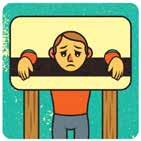
Retailers would directly issue credit to consumers until post-World War II, when dramatic economic growth prompted demand for a national credit.
According to the Federal Trade Commission, whether or not credit was extended by the local store depended largely on personal relationships between shopper and seller. That changed in the 1950s, when financial institutions got in on the action, introducing credit cards that could be used nationwide. Now more than 67 percent of adults have at least one credit card.
70 MILLION
That’s how many credit card accounts have been opened in the U.S. since pre-pandemic 2019. The widespread

use of plastic to pay for goods points to why credit card debt is the most common form of household debt for Americans, who owe about $6,000 on average. A 2023 Bankrate report found that 47 percent of credit card holders struggle to pay off their monthly balance, instead they roll credit balances over from month to month, accruing interest and fees on the unpaid balance.

The most borrowers should charge their credit cards every month, regardless of their credit limit, is one-third of their available credit. Anything more will produce a “significantly negative impact on credit scores,” warns the credit bureau Experian. The percentage of credit an individual uses every month is called a credit utilization rate, and the average rate in 2022 was 28 percent in the United States.
TOP 10 COUNTRIES WITH THE HIGHEST RATE OF CREDIT CARD OWNERSHIP (IN ORDER):
83%
79%
74%
72%
70%
69%
68%
SOUTH KOREA
67%
67% 65%
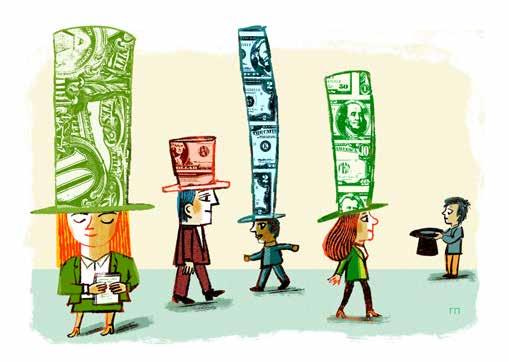
ADAM SMITH WAS NOT an economist. Capitalism’s forefather was, instead, a moral philosopher who spent much of his time pondering human nature. His most enduring insight was that a people free to work for their own self-interest would meet the needs of the larger society; that an unrestricted, competitive market — as opposed to the government-protected mercantilism of his time — would empower workers and consumers alike. His theory would eventually dominate the world’s major economies for nearly 250 years; but lately, cracks have appeared in popular support for America’s capitalist foundation. A 2021 Axios poll found that only 42 percent of adults ages 18 to 24 held a positive view of capitalism, while 54 percent saw it negatively — and that view crosses party lines. That same year, just 66 percent of Republicans, 18 to 34, saw capitalism as a positive force, down from 81 percent in 2019. Is it time to rethink the system Smith built?
—ETHAN BAUERWINSTON CHURCHILL once said that “democracy is the worst form of government except for all those other forms.” The same could be said of capitalism. Though imperfect, it’s the best method for combating poverty and allowing people the best chance to find financial stability and success. It’s also the best system for countering stagnation by incentivizing growth and innovation. Even self-proclaimed socialists are often not mad at capitalism itself as much as adjacent policies, like lacking social safety nets and rising inequality, that could be fixed without abandoning capitalism.
THE GREAT IMMIGRATION challenge of our era is not at the borders but inside them. It’s not who gets in, but what happens once they’re here. As Congress remains gridlocked, why not let states decide how the foreign-born get to belong? Consider education, abortion, health care, gun control and marijuana. States blue and red are going their own way on all these issues, often in conflict with one another and sometimes with Washington.
It is already happening, but the question is how much power over immigration will eventually devolve to the states. They can create a fragmented landscape of places that welcome immigrants and others that close their doors. And within that patchwork, we might eventually end up with a federal policy that works.
States differ in the access to health care and safety-net programs they make available to immigrants. Dreamers — unauthorized immigrants who arrived as children — are welcomed into public higher education in some states but shunned in others. Some make it easier for professionals trained abroad to get licenses; others make it harder. As states diverge further, immigrants would choose to settle in welcoming places and avoid unfriendly places.
The data validates capitalism’s effectiveness: Since it became the dominant economic philosophy around the world, extreme poverty has declined by orders of magnitude. In 1820, according to economists from the University of Paris, 84 percent of the world’s population lived in extreme poverty. That dropped to 66 percent in 1910 and by 2018 it was down to 8.6 percent. The reason capitalism “brought about the greatest reduction of poverty in human history,” writes New York Times columnist David Brooks, is simple: Compared to centrally-planned economies, capitalism is much more adaptable. “Capitalism creates a relentless learning system,” Brooks, who once identified as a socialist, wrote. “Socialism doesn’t.”
States differ in the access to health care and safety-net programs they make available to immigrants. Dreamers — unauthorized immigrants who arrived as children — are welcomed into public higher education in some states but shunned in others. Some make it easier for professionals trained abroad to get licenses; others make it harder. As states diverge further, immigrants would choose to settle in welcoming places and avoid unfriendly places.
Where socialism excels, Brooks argues, is in incentivizing corruption and cronyism among government officials. When their plans fail and goods become scarce, abuse becomes inevitable because they hold all the power. “A system that begins in high idealism,” he writes, “ends in corruption, dishonesty, oppression and distrust.” To be fair, capitalism can be ripe for abuse, too, Brooks acknowledges.
The United States can have only one form of citizenship, but states can compete over access to the world’s best brains, to the people who will care for aging boomers and to young adults with years ahead of them to pay taxes and bear children. Americans and their marketplaces have a way of sorting these things out.
ADAPTED FROM AN OP-ED IN THE NEW YORK TIMES BY ROBERTO A. SURO, A PROFESSOR OF JOURNALISM AND PUBLIC POLICY AT USC ANNENBERG,
SPECIALIZING IN IMMIGRATION AND THE LATINO POPULATION.But the answer to that abuse, he insists, is not another plan, but better capitalism. “Markets are morally neutral,” writes BYU economics professor Phillip J. Bryson. That neutrality means they can be tweaked to benefit everyone. “A big mistake those of us on the conservative side made was to think that anything that made the government bigger also made the market less dynamic,” Brooks writes, citing countries like Denmark and Finland as examples of wide-open markets that also have policies to help spread the wealth. “The only reason they can afford to have generous welfare states,” he adds, “is they also have very free markets.”
THE GREAT IMMIGRATION challenge of our era is not at the borders but inside them. It’s not who gets in, but what happens once they’re here. As Congress remains gridlocked, why not let states decide how the foreign-born get to belong? Consider education, abortion, health care, gun control and marijuana. States blue and red are going their own way on all these issues, often in conflict with one another and sometimes with Washington.
It is already happening, but the question is how much power over immigration will eventually devolve to the states. They can create a fragmented landscape of places that welcome immigrants and others that close their doors. And within that patchwork, we might eventually end up with a federal policy that works.
SINCE THE PRESIDENCY of John F. Kennedy, American wages (accounting for inflation) have been stagnant, while the wealthiest 10 percent of Americans — the top 1 percent, especially — have expanded their share of the nation’s wealth. University of California, Berkeley, economics professor Gabriel Zucman wrote that income inequality was worse in America in 2019 than it was in the period that preceded the Great Depression. Millennials are the first generation of Americans since the 1930s who are worse off than their parents in taking the first steps toward accumulating wealth. Despite being the most highly educated generation, many millennials don’t have the financial capability to save money for a home or retirement like their parents did. Amid skyrocketing housing prices, food prices, interest rates and mounting student debt, the American dream of hard work begetting opportunity has instead become a social media rallying cry of “Eat the rich!”
States differ in the access to health care and safety-net programs they make available to immigrants. Dreamers — unauthorized immigrants who arrived as children — are welcomed into public higher education in some states but shunned in others. Some make it easier for professionals trained abroad to get licenses; others make it harder. As states diverge further, immigrants would choose to settle in welcoming places and avoid unfriendly places.
Beyond economic impacts, so-called “late capitalism” — a term generally denoting modern capitalism dominated by multinational corporations and concentrated wealth — has also commercialized many aspects of existence. In “24/7: Late Capitalism and the Ends of Sleep,” Columbia University art professor Jonathan Crary explores how capitalistic impulses to spur growth and innovation will stop at nothing. “Because capitalism cannot limit itself,” he writes, “the notion of preservation or conservation is a systemic impossibility.”
States differ in the access to health care and safety-net programs they make available to immigrants. Dreamers — unauthorized immigrants who arrived as children — are welcomed into public higher education in some states but shunned in others. Some make it easier for professionals trained abroad to get licenses; others make it harder. As states diverge further, immigrants would choose to settle in welcoming places and avoid unfriendly places.
Billionaire hedge fund manager Ray Dalio, an outspoken critic of capitalism’s weaknesses, says the system’s proponents have two choices. “All good things taken to an extreme become self-destructive,” he wrote in 2020, “and everything must evolve or die.”
The United States can have only one form of citizenship, but states can compete over access to the world’s best brains, to the people who will care for aging boomers and to young adults with years ahead of them to pay taxes and bear children. Americans and their marketplaces have a way of sorting these things out.
ADAPTED FROM AN OP-ED IN THE NEW YORK TIMES BY ROBERTO A. SURO, A PROFESSOR OF JOURNALISM AND PUBLIC POLICY AT USC ANNENBERG, SPECIALIZING IN IMMIGRATION AND THE LATINO POPULATION.
According to some researchers, the evolution has already taken root. Rather than the “neoliberal” capitalism evangelized by figures like Ronald Reagan, which favors deregulation, large corporations and low taxes on the wealthy, the so-called “New Economics” promoted in a November report by the progressive Roosevelt Institute describes a movement toward worker empowerment, higher taxes on the wealthy and more government influence. “Whether or not this new approach marks a long-lasting shift remains to be determined,” the report’s authors wrote, “and whether this shift goes far enough depends on the outcome of politics and policy fights ahead.”
Mary came into our lives like she was always meant to be there. She befriended my mom while they both worked at United Cerebral Palsy in Los Angeles before I was born. I don’t remember how, but somewhere along the line, she became my Aunt Mary, earning a blood-relation moniker. I always knew she wasn’t one of my parents’ sisters, but we didn’t care. Our Aunt Mary was younger than my folks, had more energy to focus on us when she was around, and she was cool. Like, so cool.
Aunt Mary was a disability advocate in the ’70s, graduated from Harvard Business School in the ’90s (she is still the only person I know well who went to Harvard), waited to marry until she was in her 30s, and unapologetically kept her last name. I recognize that those life choices were not super cutting-edge in America in the ’80s and ’90s, but they were in my household. My family unit was held together with a glue of rigidity. Looking back on it as an adult, I realize the glue was the type that would fail without watchful, angry attention.
Somehow, Aunt Mary thrived outside of the narrow definition of what I was taught a woman should be like. She married Pat, a former ski bum and wildland firefighter. At age eight, I thought Pat was the coolest
guy I had ever met. I was a groomsman at their wedding. They gave me the mic and let me sing “Ice, Ice, Baby” on the dance floor. My brother and I don’t remember Aunt Mary advocating for her lifestyle, she was just always there for us to speak to — a listening ear we could trust. In those early
REGARDLESS OF WHAT A CHILD’S HOME LIFE LOOKS LIKE, THERE ARE BENEFITS OF HAVING THE CARE AND PERSPECTIVE OF A SUPPORTIVE NONPARENTAL ADULT.
years, she offered a solid place to land that looked different from home.
Regardless of what a child’s home life looks like — even kids like me who come from a traditional, middle-class American family — there are benefits to having the care and perspective of a supportive nonparental adult, or SNPA , in academic
research. A study published in the American Journal of Community Psychology suggests that the existence of SNPA s in adolescents’ lives as they grow up leads to positive outcomes in academic functioning, self-esteem, and behavioral and emotional health. The research brings together a broad range of examinations that prove points that anyone with an Aunt Mary knows: like how profound it can be to talk to an adult about all of the things you are scared to talk to your parents about or how having a person who offers you compliments outside of a parental structure can boost your self-esteem.
This isn’t to suggest that there is anything simple about how impactful an adult who has no biological interest in treating you as one of the most important people in their lives can be. I don’t have a clear memory of Aunt Mary giving me a pep talk that changed the trajectory of my life or a low point she lifted me up from; I just remember someone who I looked up to always making me feel like the most important kid in the room.
Now, decades later, with a career, a marriage, a child of my own — and a serendipitous friendship my wife, Sarah, and I have with a young woman named Mary — my

I DON’T HAVE A CLEAR MEMORY OF AUNT MARY GIVING ME A PEP TALK THAT CHANGED THE TRAJECTORY OF MY LIFE OR A LOW POINT SHE LIFTED ME UP FROM; I JUST REMEMBER SOMEONE WHO I LOOKED UP TO ALWAYS MAKING ME FEEL LIKE THE MOST IMPORTANT KID IN THE ROOM.
daughter Josie also has her own chosen Aunt Mary.
Josie’s Aunt Mary was our only friend who came to the hospital when Josie was born. Josie came nearly a month early and we didn’t know the protocol for inviting visitors. We were too blissed out on oxytocin to care. Mary (Josie calls her Meemee) figured out how to get in on her own and walked in, smiling. “Oh my gosh, you have a baby!” she said. She stayed for under an hour and left. We had no idea she was going to play an outsized role in Josie’s life.
Meemee lived on a farm in southern Oregon during the height of the Covid pandemic. Sarah, Josie and I podded up with her and her partner, Dominic. When schools, day cares and camps were closed, Meemee and Dominic became our child care. Through all of the stress, chaos and unknowns, I knew Josie was safe and happy on the farm with her Aunt Meemee. I’d drop off my child in the morning and in the afternoon, I’d pick up a ruddy-cheeked, wildly dirty cherub who was uncomfortably full of cherry tomatoes. In a world filled with misinformation and fear, I knew I could drop Josie off at a simple place where she could watch things grow and also grow with the love of her Aunt Meemee.
Josie isn’t the only member of our family to benefit from Aunt Meemee’s solid love. Mary was the first friend I told when I was coming unraveled after Sarah and I experienced our second pregnancy loss when Josie was three. One Father’s Day weekend, Meemee joined us to go camping and asked how I was doing. I opened up in a way that’s not typical for me, and yet it came out organically — the surprising way these emotional dumps untether when you feel safe and at peace in someone else’s presence.
Meemee’s love and care for Josie had not only made her more like a parental figure for my daughter, but also like a sister for me. A bigger support group offers, well, more support for everyone. To paraphrase the aforementioned study, throughout our lives, we are surrounded by social networks, which, in
turn, directly affect our individual well-being, by both bringing good to us and helping create a buffer to keep the bad stuff away.
I haven’t seen my Aunt Mary in eight years, but last I checked, she’s still doing as amazing as ever. I still look up to her. She and Pat live in a house they bought in Silicon Valley years before the tech industry sent property values to the moon. The last time I stopped by, I gave her very little notice, but she casually made one of the best salmon dinners I’ve had in my life. I laughed until my stomach hurt with her, Pat and their daughter, who, at the time, was finishing up her senior year of high school. I don’t know if my family’s life will look like theirs, but I know I will be happy if Sarah and I can open our doors and host dinners like that one when my daughter is a young adult.
I want to be a good father to Josie more than anything else in my life. I also know that sometimes I don’t get things right as a dad. Despite my best efforts, a rigidity creeps back into my actions; the residual patterns of the household I was raised in. I see myself passing those same patterns on to my impressionable and very sweet daughter. In a way, it feels like watching something bad happen to a beloved character in a movie multiple times. You watch it play out from your couch, hoping the character won’t make that same mistake again — that one that will undoubtedly cause calamity later in the film.
I don’t want Josie to feel trapped in the loop of creating a life that looks like mine. I don’t want her to feel like she has to follow the rules I created — despite my best efforts — that don’t make sense. I honestly have no idea how I am going to do that, but maybe the answer is that I don’t have to. Maybe the Aunt Marys can.
I hope that Meemee has children of her own, so I can be there for them in the same way she’s been here for Josie. I feel like I already love them and plan to embrace the changes that will come when her favorite kid in the world is no longer my daughter. And I hope they call me Uncle Joe.

Jim Laybourn was up before the sun. It was springtime, around 5 a.m., and the birds were lively, but otherwise, Grand Teton National Park was all quiet and most people staying at the historic Jackson Lake Lodge were still asleep. This was 2006, when pre-dawn starts for a day’s outing in the national park weren’t the requirement they are today. Laybourn’s groggy-eyed clientele wondered why they were leaving so early. They wanted to see grizzlies, though, and back then, if you wanted to see a grizzly, you drove north to Yellowstone.
The Tetons have always been a rich habitat for wildlife — elk, bison, black bears, moose — and grizzlies once roamed these mountains, too. But by 1975, when the grizzly was added to the endangered species list, the bears had disappeared from the Tetons altogether. At the time, biologists in the Greater Yellowstone ecosystem counted only 136 of them, all in Yellowstone National Park. That’s why Laybourn, a wildlife guide, was packing his brown 1997 GMC Suburban so early that spring morning.
After everyone on the wildlife tour had buckled their seatbelts, Laybourn slid into
the bench seat behind the steering wheel and drove out of the lodge’s covered parkway. But just as he turned onto the highway junction, Laybourn saw something move. Out of the darkness, a mother grizzly and three cubs stepped onto the road. Laybourn
THERE’S A DEEP, INNATE PART OF US THAT WANTS TO BELIEVE WE ARE STILL CONNECTED TO WILD PLACES AND CREATURES, DESPITE THE WAYS MODERN DEVELOPMENT BUFFERS US FROM THAT WORLD.
was stunned. He had no idea grizzlies were living in Grand Teton National Park, let alone a mother with three cubs.
“I knew that was something special right there,” he says.
The grizzly Laybourn saw that morning is often said to be the most famous grizzly in the world. She’s easily recognized by the
millions of people who visit Grand Teton National Park. Over the years, her many fans and admirers have followed her story through its highs and lows, celebrating when she emerges from hibernation in the spring with a new litter of cubs, mourning her losses, and awaiting with suspense in moments of uncertainty. She’s a beautiful bear, with a streak of blonde fur hugging her shoulders. But the official way to identify her is by the number on the tag that biologists gave her when she was five years old. She is known as Grizzly 399.
The reason why 399 is so famous is that she has lived close to humans for most of her life, giving the public a rare glimpse of her day-to-day routines, allowing us to watch as she’s raised generations of cubs — teaching them how to forage for food and navigate across the landscape. As far as biologists know, she’s birthed 18 cubs in her 27 years. Last spring, she made headlines when she emerged from hibernation with her newest cub, making her the oldest known female grizzly to reproduce in the Greater Yellowstone ecosystem.
Conservationists call her an ambassador


GRIZZLY 399’S RELATABILITY CAN BE DECEIVING. IT’S ALL TOO EASY TO FORGET THAT SHE IS WILD, UNPREDICTABLE AND HAS LIMITS TO HER TOLERANCE.
for her species. She was among the first grizzlies to return to Grand Teton National Park, becoming the face of the Endangered Species Act’s success. To some, she’s now the face of its shortcomings during a pivotal moment for grizzly bears in America.
After 49 years, state officials in Montana, Wyoming and Idaho are now seeking to remove grizzlies from the endangered species list and lift their protections. This February marks the end of the U.S. Fish and Wildlife Service’s one-year review period for considering the delisting, and a decision will be made. The overall grizzly population remains under 2,000 today — an impressive recovery from 136, but a far cry from the estimated 50,000 that lived in North America, with habitat stretching from Alaska to Mexico in the early 1800s. In an attempt to restore some of that original habitat, federal agencies drafted and released a plan in October to reintroduce grizzlies to Washington, near North Cascades National Park.
Tangled among stories of bear attacks, increasingly small buffers between urban areas and wilderness, and hopes to return fragile ecosystems to their healthiest states, both proposals have been met with controversy on all fronts.
The paradox for 399 is that while her story has helped drive worldwide attention for grizzly conservation, every step she takes in front of a crowd is a huge risk to her life, and — as the face of a species — the reputation of all grizzlies.
LAYBOURN SAYS THAT day he saw 399 for the first time was the day his life changed. The encounter was so unusual, he knew he wanted to find her and her cubs again. He became so occupied by 399 that he quit his seasonal jobs building homes and guiding wildlife tours to become a filmmaker so he could spend more time looking for her. Eventually, he produced a short documentary about her story, about the fine line
she walks teetering between wilderness and human development. He filmed 399 threading a path through the forest with her cubs running ahead, and leading her cubs through a gauntlet of parked cars and people. One shot pans behind a wall of people standing along the road, watching her hunt down an elk.
“The celebrity was unavoidable because she’s so visible,” Laybourn says. “But I think it’s a conscious trade-off that she has made. That she can put up with hundreds of people watching her, making all sorts of noise, acting stupid. She still just goes on about her business. It’s not like she spends her time staring back at us. She’s foraging. She’s teaching her cubs different food sources. And just living her life.”
Others caught on to 399’s presence in the park around the same time as Laybourn. Tom Mangelsen, a wildlife photographer, first saw 399 and three of her cubs near Oxbow Bend, a well-known site in Grand Teton National Park to see wildlife. He still spends countless hours searching for 399 and taking photographs of her. One year, he counted the days in the field he spent looking for her: 150. Grizzly 399 is Mangelsen’s muse. “She’s beautiful in ways we think the classic grizzly bear might be described,” Mangelsen says. “Her personality is calm, generally speaking. She’s very smart, intelligent.”
It’s easy to project humanlike qualities onto 399. She’s a mother. Watching her lead her cubs, looking both ways as she crosses a road, is so easy to relate to. Humans anthropomorphize animals and assign them human qualities to relate to, and have empathy for, them. There might also be a deep, innate part of us that wants to believe we are still connected to wild places and creatures, despite the ways modern development buffers us from that world. If we can relate to animals, it makes it easier to believe that we can coexist alongside them. That’s part of 399’s allure, why so many people are so drawn to her.
“The visitors that are coming to see these bears, I mean, we’re all human. We want
to know the story,” says Justin Schwabedissen, Grand Teton National Park’s bear biologist. “We want to make those connections to these animals.” But 399’s relatability can be deceiving. It’s all too easy to forget that she is wild, unpredictable and has limits to her tolerance. “I think that a lot of times we do forget some of the biology behind these animals,” he adds.
IN JUNE 2007, a teacher, Dennis VanDenbos, was hiking at Jackson Lake Lodge when he encountered 399 and her three cubs. After rounding a corner on the trail, he surprised the family as they were consuming the carcass of an elk calf. VanDenbos was too close. Grizzly 399 reacted and bit VanDenbos in the back.
At that time, bear biologist Chris Servheen was the grizzly bear recovery coordinator for the U.S. Fish and Wildlife Service. Part of his job was deciding the fate of bears when they got into a conflict with a human. When a problematic bear is “removed,” wildlife officials can relocate the bear, place it in captivity or euthanize it. When the case of 399’s attack on VanDenbos came to Servheen, however, he decided to leave her and her cubs alone. It came down to this: He believed 399 was acting as a bear should act, hunting for food with her cubs in her natural environment. And VanDenbos, though he was injured, survived.
Servheen calls the mauling a “natural aggressive incident.” Famous or not, Servheen says he made no exception for 399, gave her no special treatment. “Natural aggression is defense of food, surprise encounter or protecting cubs,” he says. “Bears that are aggressive in one of those three types of incidents, we tend to give a lot more leeway to.”
Still, it was a close call. If 399 ever went further, the outcome would be a different one. “It’s remarkable that she’s lived as long as she has, considering the hazardous area that she lives in,” Servheen says, noting that biologists don’t want to see grizzlies spend as much time so close to humans as 399 does. She’s not the model example of
grizzly behavior — even though somehow, to many, she is just that.
TO A GRIZZLY bear, the concept of Grand Teton National Park doesn’t mean much. Schwabedissen says all grizzlies leave the park’s boundaries from time to time. Once bears cross the park’s boundary line, they enter the jurisdiction of a handful of federal, state and local agencies, as well as private and public lands, ranchers and hunters, tourists and second homeowners. Whenever 399 ventures beyond the park, law enforcement and wildlife officials are on alert. When she mauled VanDenbos in 2007, Grizzly 399 was still relatively unknown.
OF 399’S 18 CUBS, 10 HAVE DIED, ALL BUT TWO FROM HUMAN-RELATED CAUSES. THIS IS ONE REASON WHY THERE ARE EFFORTS TO DELIST GRIZZLY BEARS.
She may not have gotten special treatment then, but she does now. Last year, 33 wildlife brigade volunteers logged more than 12,000 hours in the park, working from 6 a.m. to 10 p.m. seven days a week during peak season, to monitor wild animals like 399 and ensure encounters with humans are avoided.
“There’s been a lot of effort that’s gone into maintaining her and keeping her alive,” Servheen says. “I want you to know that. A lot of state management agencies, park management agencies have gone to great lengths to try to secure her life and make sure that she stays out of trouble.” That may be so that the species can stay out of trouble at a vulnerable time, too.
As grizzly populations become denser, young grizzlies, especially the two- and three-year-olds newly independent from their mothers, have to disperse farther away from the park to find the resources they need and establish a home range, Schwabedissen explains. Almost all of those younger
grizzlies are pushing south or southeast — toward town. On a dark November night in 2021, Grizzly 399 and her four cubs were caught on security cameras roaming the empty streets of downtown Jackson. Footage shows the five grizzly bears walking right past the police station, the county jail, the courthouse. “She was in neighborhoods where people don’t really think about bears,” Luther Propst, Teton County Commissioner, says. “It was hair-raising.”
Of 399’s 18 cubs, 10 have died, all but two from human-related causes. Five of her offspring were euthanized by wildlife agencies because the grizzlies were getting into human foods or other human conflicts. Two were struck by vehicles. One was shot and killed by a hunter outside the boundary of Grand Teton in self-defense. These instances, in part, are some of the reasons why there are current efforts to delist grizzly bears, as well as resistance to reintroducing them in northern Washington.
Most everyone hopes that 399 will live the rest of her life in peace and that she’ll have a natural death whenever that time comes. The reality is that the odds of that kind of peaceful ending to her story are slim. Adult grizzlies have a much higher likelihood of dying at the hands of a human. So these days, Laybourn stays away and doesn’t go looking for 399 anymore. “Her celebrity is too much,” he says. Instead, he channels his passion for grizzlies into his work at Jackson Hole Bear Solutions, which gives Jackson residents bear-proof trash cans, helping to keep bears and people safe from each other.
At the same time, he doesn’t fault people for wanting to have their moment with her. People want to connect with American nature and experience those imitable moments of awe. For decades now, 399 has given them that. She gave Laybourn the same gift on that dark morning in 2006. “When you drive into Teton Park and all of a sudden there’s a grizzly bear with her three cubs on the side of the road, you realize you’ve reached wild.”
The dinner table conversations in Martha Minow’s home have, for decades, revolved around the big issues of the times: civil rights, the women’s movement, the war in Vietnam. From an early age, Minow was exposed to a fearlessness around addressing big ideas, and absorbed a sense of obligation to engage in public life and effect positive social change.
A former dean of Harvard Law School, a 300th Anniversary University Professor and a leading authority on human rights law, Minow thinks a lot about what it means to honor the humanity of each individual, particularly those who are often marginalized. She studied the origins of ethnic conflict in Kosovo and, in 2001, worked with the United Nations High Commissioner for Refugees to chart possible ways forward for post-conflict societies in the former Yugoslavia and Rwanda.
Minow’s scholarship spans a broad range of topics, including human rights, legal ethics, disability rights, education law, local news and the role of law in promoting social change. In her most recent book “Saving the News,” she wrestles with alternatives for sustaining local news.
In an interview with Deseret, Minow shared her thoughts on more productive ways of resolving conflict, seeing the humanity in those we disagree with, and finding resolution amid tensions between state and religion.
WHEN I WAS quite young, probably in first grade, I distinctly remember noticing that the prayers that were said in school were not the ones that I heard at home. My family is Jewish, and I grew up very mindful of the history as the basis of religious identity. It was part of my upbringing to recognize that the human experience is universal. I’ve always felt that the oppression the Jews
WE NEED TO SHARE THE BELIEF THAT THERE IS SOMETHING GOOD ABOUT LEARNING FROM PEOPLE WHO ARE DIFFERENT AND CULTIVATING ENOUGH HUMILITY SO YOU DON’T THINK YOU’RE ALWAYS RIGHT.
have experienced gives us an obligation to stand up for people who are not Jewish but face similar kinds of challenges.
The focus in my work has been on people who are excluded or marginalized in society. Oliver Wendell Holmes Jr., an associate justice of the U.S. Supreme Court
who fought in the Civil War, wrote that it was “absolute belief” that leads people to violent conflict. So many wars have been fought because people are so confident that they’re right.
I’ve been writing for some time about how problematic it is for disagreements between the state and religion to go to court. If you go to court, they don’t say, “Let’s work it out.” The courts answer “yes” or “no” questions in a winner-takes-all approach. But the questions of church and state are not “yes” or “no” questions — they are very complicated issues.
When it comes to resolving these disagreements, I advocate for finding points of convergence and negotiation. I have the utmost respect for the Utah Compromise, a concerted effort between The Church of Jesus Christ of Latter-day Saints and state leaders to find common ground around the issues of LGBTQ anti-discrimination and religious freedom. I’m not a Latter-day Saint, but I do understand that a part of Latter-day Saint theology respects the Constitution and understands that pluralism is an important part of being able to live together. We need to share the belief that there is something good about having the possibility of learning from people who are different from yourself and cultivating enough humility
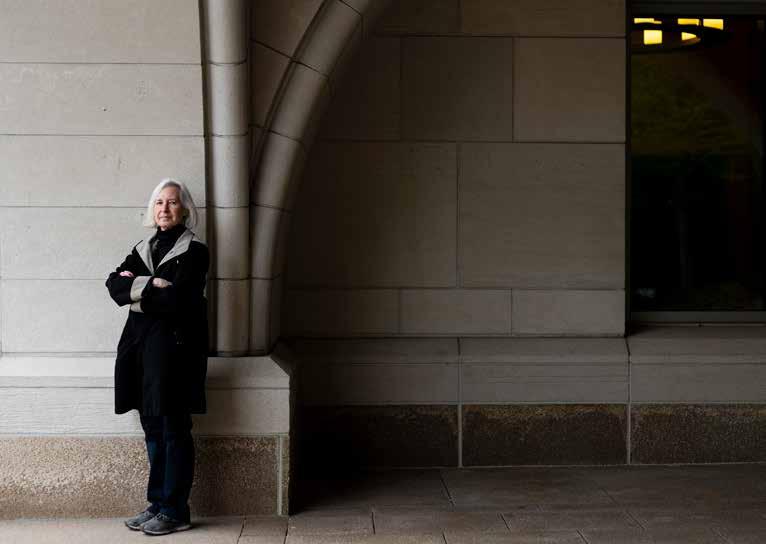
so that you don’t think you’re always right.
At Harvard Law School we have a program on negotiation that teaches students to distinguish between their interests and their positions. Often, the conflict seems irresolvable, because people have positions that are too far apart. But when people reflect on what they really want, once they identify the interest underlying their position, they can often come up with a third answer that both parties are quite happy with.
I acknowledge there are some irresolvable conflicts. Yet, I do believe that a mindset that can lead to more productive solutions is one that recognizes the humanity of everyone involved. It tries to find the points of convergence and overlap to achieve common goals while coming from different positions.
In the United States legal system, we’re very focused on the individual and individual rights, but rights are actually a way to think about relationships. We don’t have rights apart from other people. It is about constructing the basis for respecting other people.
Some people have told me they don’t understand my work — why I focus on child abuse, war, genocide. And for me, it’s all very connected. The connection has to do with the dehumanizing of another that can lead to violence, discrimination, war and the refusal to find a way to coexist. Unfortunately, there can be a downward slide. I worry about our country right now, that there’s such demonizing of people.
I had a wonderful adviser in college, Gerald Linderman, who told me: “Don’t forget that the people you’re writing about are all human
beings.” That was very powerful to me.
I think that we can lower the temperature and hostility of conflicts when we separate the disagreement over issues from the dignity of the people holding views with which we disagree. Respecting people that we really disagree with means listening and being open to the possibility that we don’t understand. It also means finding areas of agreement we can build on. These points of connection can be pragmatic and practical, but they also can very much be renewed and strengthened by a recognition that the person on the other end of the disagreement is a human being who has dignity, who deserves respect, who — just like me — has struggles, and hopes, and dreams, and all the things that make human life precious.
YEARS AFTER FORCED FAMILY SEPARATIONS, THE PIECES ARE PAINFULLY BEING PUT BACK TOGETHERBY GABY DEL VALLE
Anilú Chadwick thought she was delivering good news. After months of scouring government records and coordinating with various federal agencies, she had tracked down the father of one of the more than 5,600 migrant children separated from their parents in government custody while attempting to immigrate to the United States. But there was a problem. When Chadwick set up a phone call between the child — who was being held in a government shelter — and their father, the two couldn’t understand each other. They had been apart just a few months, but the child could no longer communicate with their father in their native language.
Without being able to confirm that this was the right child that they were bringing back to the family over the phone, Chadwick sent the father a picture of the child. “It felt like trying to update the kidnapped child poster to say, ‘OK, is this the child you’re looking for?’” says Chadwick, a managing attorney at the immigration advocacy nonprofit Kids In Need of Defense.
What should have been a moment of relief — a family reunited after a traumatic, protracted separation at the hands of a foreign government — was instead bittersweet. As efforts intensify to reunite families who have been separated since the Trump administration’s zero tolerance
immigration policy was enacted, instances of migrant children who have forgotten their native languages or even their parents’ faces are becoming more common.
On May 7, 2018, then-Attorney General Jeff Sessions declared that anyone caught crossing the border without authorization would be arrested for illegal entry. A statute criminalizing illegal entry had been on the books since 1924, but prosecutions were rare, until the Bush era, when they surged after 9/11. Families were largely excluded; those targeted were primarily
“IT FELT LIKE TRYING TO UPDATE THE KIDNAPPED CHILD POSTER TO SAY, ‘OK, IS THIS THE CHILD YOU’RE LOOKING FOR?’”
single adults, not parents traveling with children. For parents hoping to claim asylum with their families, the zero tolerance policy would mean being separated from the children they were trying to protect. A different picture was painted during the policy’s announcement. “If you don’t want your child to be separated,” Sessions said in a press conference, “then don’t bring them
across the border illegally.” After six weeks of sustained backlash, representing everyone from former first lady Laura Bush to the chair of the National Republican Congressional Committee, former President Donald Trump signed an executive order prohibiting immigration officers from separating families.
But, largely unknown to the public at the time, separations had begun long before Sessions’ announcement and continued after Trump rescinded the protocol. Chadwick started working at Kids in Need of Defense, or KIND, in September 2018, three months after Trump reneged on the zero tolerance directive. By that point, advocates for migrant children had been sounding the alarm about the practice for well over a year. In the spring of 2017, legal service providers started noticing an uptick in referrals to shelters operated by the Office of Refugee Resettlement — and the children they spoke to said they weren’t unaccompanied minors at all. They had come to the United States with their parents, only to be taken from them after crossing the border.
At least 998 of the estimated 5,500 children taken from their parents at the border as of last February are waiting to be reunified with their families, according to the Department of Homeland Security. And uncertainty continues to linger as this year’s presidential election approaches.
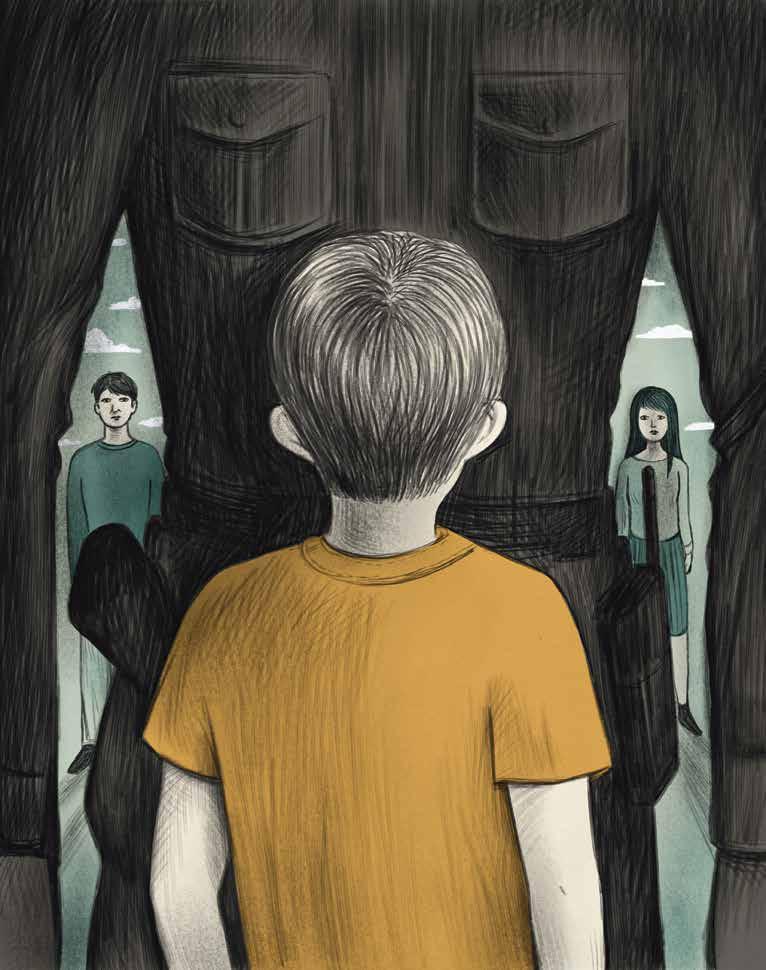
Immigration is considered by candidates and voters as one of the country’s most pressing issues. Trump has promised to revive extreme immigration crackdowns if he is reelected. This time around, however, there will be more oversight and constraints on the president’s ability to separate families at the border. A recent settlement in federal court prohibits the federal government from separating migrant families again for eight years.
THE LANGUAGE OF border enforcement makes it difficult to understand how and why the separations occurred. Crossing the border illegally is indeed a federal crime — one that prosecutors decide whether to enforce. But when Border Patrol agents catch someone crossing between ports of entry, they don’t arrest them: They “apprehend” the border crossers, detain them in Customs and Border Protection custody until they can be transferred to facilities operated by Immigration and Customs Enforcement, and then begin deportation proceedings. The entire process, which was created bit by bit over the 20th century, is civil, not criminal, and it applies to children just as much as it does to adults.
The parents arrested in El Paso were apprehended by Border Patrol agents then referred to federal prosecutors to be charged with illegal entry then sent back to DHS custody and detained by ICE. Some were deported. Their children, meanwhile, ended up in Office of Refugee Resettlement shelters all over the country. And little effort as made to record which parents corresponded to which children, making reunifications incredibly difficult.
“Organizations that were working directly with kids in ORR custody were identifying many, many children who were deeply traumatized as they appeared in ORR custody and had been separated from their parents with virtually no record-keeping about the basis of the separation or where the parent could be located,” says Kelly Kribs, the Chicago co-director of the technical assistance program at the Young Center for Immigrant Children’s Rights.
The broader public only became aware that separations were occurring in November 2017, after the Houston Chronicle reported that public defenders in El Paso were being assigned to migrants who claimed to have had their children taken from them after crossing the border. The Trump administration denied that it had a family separation policy in place. But in January, the ACLU filed a lawsuit on behalf of Ms. L., a Congolese woman who had her daughter taken from her in San Diego in November 2017 — one of the thousands of African migrants who arrived at the U.S.-Mexico border that year, amid a significant uptick in asylum claims from people outside Latin America. Unlike the families whose separations were triggered by illegal entry arrests, Ms. L. asked for asylum at a port of
“IF YOU DON’T WANT YOUR CHILD TO BE SEPARATED, THEN DON’T BRING THEM ACROSS THE BORDER ILLEGALLY.”
entry, meaning she didn’t cross the border without authorization. Her child was taken anyway, and they remained separated until the lawsuit was filed. But this was just one reunification, and the government had yet to admit that the separations were systematic and widespread.
In March of that year, the ACLU filed a motion for class certification, expanding the lawsuit to all “adult parents nationwide” in federal immigration custody whose children were being held in ORR shelters, “absent a demonstration ... that the parent is unfit or presents a danger to the child.”
By the summer of 2018, all eyes were on the border. A poll by Quinnipiac University found that 66 percent of voters opposed family separation, though 55 percent of Republican voters supported it. Some Republican lawmakers, however, broke with
their party’s leadership and criticized the policy. Republican senators including John Kennedy of Louisiana and Susan Collins of Maine spoke out against the separations. Collins called the practice “traumatizing to the children who are innocent victims” and “contrary to our values in this country.” Mitt Romney, at the time the Republican Senate candidate for Utah, urged the Trump administration to stop the “disturbing” separations, which he called a “dark chapter” in American history.
On June 26, a week after Trump ended the policy, a federal judge gave DHS a 30-day deadline to reunite the families separated under the policy, excluding parents who declined to have their children returned to them and those who were deemed to be unfit or present a danger to the child. Children ages five or younger were to be reunited in two weeks.
It quickly became evident that it would be impossible to reunite families within that time frame: At least 400 parents had already been deported and had reportedly been told that they’d only get their children back after signing repatriation documents. Gutting images emerged during these few months. Children were photographed in crowded, dirty Border Patrol holding cells; their cries were recorded by whistleblowers, as were the taunts lobbed at them by immigration officers. A video surfaced of a woman crying after being reunited with her toddlers — not tears of joy, but of confusion upon recognizing that her baby no longer recognized her.
A WEEK AFTER taking office in February 2021, President Joe Biden announced the creation of an interagency family reunification task force. Until that point, the reunification effort was almost entirely spearheaded by a coalition of immigrant advocacy organizations led by Justice in Motion, a nonprofit organization based in New York. With the government’s help, the organizations hoped the arduous process of identifying, tracking down and reuniting families would become a little less difficult.
By June of that year, the task force
reported that it had identified at least 3,900 children who were separated under the zero tolerance policy, more than 2,100 of whom had yet to be returned to their parents. “When we received the list and the government information,” Chadwick says, “it was a lot of the same information that we had received in 2018 that led to dead ends.” To find parents, KIND and its partners had to rely on nonprofits in the parents’ countries of origin. One of the biggest hurdles, Chadwick adds, was convincing parents to trust the same government that had taken their children.
“In some cases, it took up to 11 months of continuous conversations with individuals who were part of the family both in the countries of origin and in the U.S. to make sure that this was a true program, that this wasn’t another lie, that they actually may see their children once again,” Chadwick says.
To gain trust, KIND worked with people on the ground in Guatemala who spoke the same Indigenous languages as many of the families who had been separated. Chadwick recalled working with a reunification specialist who is fluent in Q’anjob’al, a Mayan language spoken by about 100,000 people. “It was the first time the father had ever been talked to about separation — explained what had happened — in a language he understands,” Chadwick says. “Having that parent’s trust and having word about the program spread through the community, in that community’s voice, led to more than 20 individuals from that community registering and qualifying to be reunited with their children.”
Throughout the reunification process, the Biden administration and the ACLU have been negotiating a settlement for the families separated under zero tolerance. In late 2021, after The Wall Street Journal reported that the administration was considering paying $450,000 to each family affected by the policy, Biden — who had previously said affected families deserved some “sort of compensation, no matter what” — dismissed the report as “garbage.” Shortly after, the administration withdrew
from financial settlement talks, noting that settlements could be a political liability. By December of that year, negotiations had stalled. The administration and the ACLU finally agreed on a settlement in October. Under the settlement agreement, the families who were split up will be allowed to return to the United States and will have their asylum cases reopened. Unlike other asylum-seekers, they won’t be subjected to a one-year application deadline. The parents will receive expedited, renewable three-year work permits, and will also get medical and mental health assistance from the federal government. The settlement also expands the size of the class action by at least 500 people, bringing the total number of affected children to more than 4,400.
“I think both we and the Biden admin-
ONE OF THE BIGGEST HURDLES WAS CONVINCING PARENTS TO TRUST THE SAME GOVERNMENT THAT HAD TAKEN THEIR CHILDREN.
istration would have liked to have gotten this done sooner,” says Lee Gelernt, the lead ACLU attorney on the case. “But now we’re not going to look backward. We think short of Congress issuing green cards to these families, this settlement is a significant step forward.” The settlement also prohibits federal immigration authorities from using illegal entry as a mechanism to separate parents from their children, though it does allow separations under limited circumstances, which Gelernt says the ACLU will track.
Some advocates worry these measures don’t go far enough, both in terms of recourse for families and with regards to preventing future separations. “These families deserve monetary damages for the lasting and significant harm that our government inflicted upon them,” says Jane Liu, the
Chicago-based policy and litigation director at the Young Center for Immigrant Children’s Rights. Liu adds that separations have continued under Biden, occasionally because Border Patrol agents deem that the parent is a danger to the child, but noted that officers have a lot of discretion while making that determination. “We continue to be appointed to kids that have been separated from family members — parents — under the Biden administration,” she says.
For those who have spent the past six years mitigating the fallout of the zero tolerance policy, the settlement is a crucial step forward, but it is not the end. Dr. Nicholas Cuneo, the co-founder and medical director of HEAL Refugee Health and Asylum Collaborative, says the separations will undoubtedly have long-term — potentially lifelong — effects on children’s mental and physical health. Cuneo points to the large body of medical work indicating that children who go through “adverse childhood experiences” often develop chronic medical conditions. “Having a greater number of adverse childhood experiences was shown to lead to decreased lifespan,” he says.
Cuneo has worked with children of all ages who have been traumatized by separations, and he says that the psychological toll has been significant. “For young children, at the beginning — on the reunification side — they may not know or recognize their parent, and may be very quiet and not emotive in a way that can be powerfully disturbing to the parent, who is wanting to have this emotional reunion,” he says. Older children often feel guilty and ashamed of what happened to them, Cuneo says, “and they’ll internalize that trauma — they’ll feel culpable.” Self-blame is a common symptom of post-traumatic stress disorder, and some parents, too, blame themselves for what the government did to them.
“They often will question whether they should have made the journey to begin with, even if they were fleeing something that doesn’t leave them with much choice,” he says. “Often, they’ll say, ‘This was much worse than anything I could have imagined.’”

NO DEMOCRACY IN RECENT HISTORY IS AS POLARIZED AS THE UNITED STATES IS RIGHT NOW. HOW DID WE GET HERE? AND CAN WE FIX IT?
HERE ARE A DOZEN IDEAS, ORGANIZATIONS AND PEOPLE FIGHTING POLARIZATION
ILLUSTRATION BY JON KRAUSE PORTRAITS BY KYLE HILTON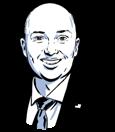 BY SPENCER COX
BY SPENCER COX
n July 2023, I was honored to be elected by my fellow governors to serve as the chair of the National Governors Association and immediately launched an effort we titled “Disagree Better: Healthy Conflict for Better Policy.”
That title was quite deliberate.
Rather than suggest we need more civility or bipartisanship in our politics — both good things — I wanted to convey that what we need even more is to disagree differently and that healthy conflict is an important prerequisite for good policy. Toxic conflict is bad, but the lack of conflict is also bad.
Before I share more about our work as governors, allow me to explain why I’m deeply concerned about our country. In early 2022, a group of fellow governors and I attended a reception at the Swiss Embassy in Washington, D.C. Ambassador Jacques Pitteloud began his remarks as one would
expect, touting the important economic ties between Switzerland and the U.S. He then spoke about how his Cold War childhood shaped his admiration of the United States and described being in Berlin in 1989 when the Wall crumbled. The ambassador’s remarks then took a turn. He said he worried that America had become deeply divided and that extreme voices on both sides were now dictating the political agenda. “There is a fear that this is not the America that can be trusted to lead and transform the world as it did in my youth,” he said.
I’ve since heard this sobering sentiment from many current and former diplomats and allies: that U.S. polarization and political violence are part of Vladimir Putin’s strategy; that our endless bickering emboldens Russia and China to criticize democracy and promote autocracy to weaker nations; that our allies are concerned about our lack of predictability; and that rising levels of political violence in the U.S. make us less credible in criticizing the same abroad.
Robert Gates, former secretary of defense to both Presidents George W. Bush and Barack Obama, recently told me he believes polarization is currently the greatest threat to the United States. That’s a startling assessment from someone who knows.
Americans now use the word “divided” more than any other trait to describe our country, and between 2018-2022, Americans’ desire to listen to the other side dropped sharply, from 60 percent to 49 percent, and their animosity toward members of the other party is increasing rapidly. More than 7 in 10 Democrats and Republicans perceive the other side as brainwashed, hateful and arrogant. Polling shows that 70 percent of Americans believe America is in crisis and at risk of failing, and 40 percent of Americans report they’ve lost faith in U.S. democracy.
Those perceptions are now translating into actual violence. Between 2016-2021, political violence toward members of
Congress increased tenfold (1,000 percent) and nearly doubled for the judiciary. The same is true for local officials, who report shocking levels of harassment and threats.
All of this creates a chilling effect, both on public service and on speech itself.
So where will it all end? Without a change, I fear it ends in more violence at home, continued policy gridlock and extraordinary vulnerability abroad.
LEST I’VE PAINTED too bleak a picture, let me offer important reasons for hope.
First, there’s a huge market for something different from our politics. It turns out there is an “exhausted majority” of Americans — about two-thirds of us — who are fed up with divisive rhetoric and feel their voices are overlooked as louder and harsher voices dominate the political discussion. Most of the exhausted majority are not moderates, but they believe it’s possible to find common ground.
There’s also an exhausted majority of politicians who are hungry for a change. The response to Disagree Better among my fellow governors and other elected officials has been not only supportive but enthusiastic. They don’t want to view their opponents as their enemies and they don’t like catering to the fringe of their party who demand extreme rhetoric and reckless behavior. Like me, they entered public service to solve problems and are frustrated that extreme polarization often makes that impossible.
It’s also helpful for us to recognize we may not be as far apart as we assume based on what cable news tells us about the other side. It turns out there is a “perception gap” — both Republicans and Democrats believe the other side is about 30 percent more extreme than they actually are.
Improving the way we talk about politics and treat people is absolutely critical, but we also need to change how we judge candidates for public office. Whether a candidate treats opponents with dignity or contempt
shouldn’t be secondary to their positions on health care, immigration or energy policy; it should be alongside or even ahead of those issues. This works best when each side monitors and tends its own candidates and behavior. As voters, we dictate the political marketplace and we should be willing to reject candidates with whom we might agree ideologically when they are gratuitously divisive.
In that same spirit of changing the marketplace, if you’re on social media, mute the divisive voices from both sides and amplify the constructive voices. And please consider turning off cable news entirely. My wife Abby and I are 11 years sober from cable news, a decision that improved our lives immeasurably.
And finally, we should work on building up the institutions within our orbit. When we belong to a church, a Rotary or Kiwanis Club, a book club or some other community organization that offers us friendships, a role to play, and a chance to serve others, we’re less likely to make politics our religion.
To be clear, we’re not asking people to leave behind their sincerely-held beliefs. I’m a conservative Republican and I’ll continue to criticize ideas I think are wrong. I’m confident Democrats will continue to oppose many of my positions. The key is keeping the conflict respectful and productive. Sometimes healthy conflict will produce a compromise, but sometimes it won’t and that’s OK. It’s still the right approach.
Evil people and malevolent regimes see America’s divisiveness as an opportunity to exploit. May we prove them wrong and show that the best feature of American democracy is a constitutional system that helps us not merely tolerate people with differing views, but to engage with them, debate them respectfully, refine our ideas, win with magnanimity, lose with grace and make our country stronger.
SPENCER COX IS THE GOVERNOR OF UTAH AND THE CHAIRMAN OF THE NATIONAL GOVERNORS ASSOCIATION.
THERE IS AN “EXHAUSTED MAJORITY” OF AMERICANS WHO ARE FED UP WITH DIVISIVE RHETORIC AND FEEL THEIR VOICES ARE OVERLOOKED AS LOUDER AND HARSHER VOICES DOMINATE THE POLITICAL DISCUSSION.
WHEN JOHN GABLE joined Netscape Navigator, a now defunct internet browser, in 1997, his view of the internet was still optimistic. Gable imagined a world where the flush of new information would eliminate stereotypes, improve decision-making and bolster connection. He’s since changed his mind about what the internet has become.
It’s true that information is more accessible than three decades ago, but this has risen in tandem with polarization and media bias. That’s why Gable co-founded AllSides in 2012, which offers tools to promote balanced news and reduce polarization.
These tools include audits for news organizations to determine their own biases and the AllSides website, which syndicates news stories and labels their political leanings. Gable hopes the internet can once again be a source of knowledge rather than of misinformation. “We’re farther along the path to recovery than we were,” he says. “We have a chance to start making things better.”
—NATALIA GALICZATO REDUCE POLITICAL POLARIZATION AND SAVE AMERICA FROM ITSELFBY RACHEL KLEINFELD

emocrats and Republicans have long disagreed on policy issues — that’s the normal, useful contestation that drives democracy. But today, each side fears the other will destroy the nation if they achieve power. When obliterating the other side becomes the ultimate goal, democracies fall apart.
How can we heal our country’s toxic polarization? Here are seven research-backed ideas for pundits, politicians, reporters and regular citizens to bring down the temperature.
1. CALL OUT YOUR OWN PARTY.
Humans are social creatures — we want to belong. We look to those with status to tell us what it takes to be part of the in-crowd.
That means politicians, pundits and ideological leaders should stand vocally against polarizing and hateful language and actions.
Public stands by people seen as associated with a political side can change partisans’ perceptions by making such behavior appear unacceptable to that group.
Professors at NYU, Harvard and UCLA have found that it is most influential to criticize one’s own “tribe.” That is because critiquing one’s own group signals what is acceptable to group members in a way that taking potshots at the other side doesn’t.
2. AVOID BAD JOKES.
You might never dream of condoning partisan murder — but you might still share a funny meme to that effect. Watch it: jokes have a particularly strong effect on normalizing prejudice — far more than an overtly prejudiced argument.
Particularly dangerous are jokes that employ violent rhetoric or dehumanize with language like “groomers” or animal comparisons. A slew of research shows that dehumanizing language removes inhibitions to perpetrating violence, especially when the language cultivates preexisting grievances and the speaker is respected by his or her group.
3. MAKE SOCIAL MEDIA KINDER.
You may not be able to alter someone’s deeper beliefs, but there are three ways regular people can reduce the spread of hateful memes and curb prejudiced or polarizing speech on social media.
First, remind users that online speech
has real-world, offline consequences (both to the writer, since employers can see posts, as well as to the person or group targeted). Second, making a personal or empathetic connection with the speaker can lead to posts being deleted. Finally, humorous words or images that make fun of the original idea can also defuse the spread of hateful speech.
4. DOWNPLAY THE FRINGES, AND HIGHLIGHT THE MEDIAN.
Americans are more polarized emotionally than ideologically — we actually disagree on policy far less than people think. Stunningly, a majority of Americans agree on the broad strokes of abortion, immigration and gun legislation.
Because partisans tend to have distorted views of who composes the other party and how many people believe stereotypical views attributed to that party, providing real information that overturns these beliefs can reduce polarization.
5. EMPHASIZE DISAGREEMENT WITHIN PARTIES. Reminding people that partisans have a range of opinions can dial back polarization. Immigration policy can be framed as left versus right, or as a complex issue that pits some right-wing business owners against others, some left-wing unions against more progressive activists, and so on.
The Difficult Conversations Lab at Columbia University found that when people read nuanced articles on policy issues that underscored this kind of intraparty disagreement, their conversations with people from the other party were of higher quality.
6. AVOID REPEATING MISINFORMATION, EVEN TO DEBUNK IT.
Repetition leads our brains to think things
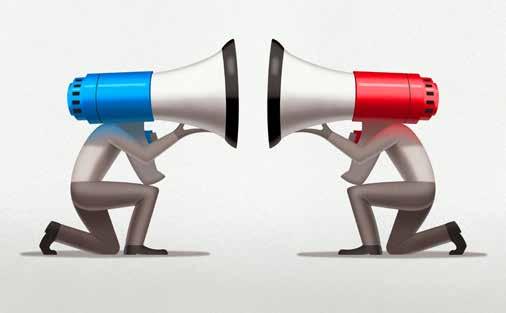
AMERICANS ARE MORE POLARIZED EMOTIONALLY THAN IDEOLOGICALLY — WE ACTUALLY DISAGREE ON POLICY FAR LESS THAN PEOPLE THINK. STUNNINGLY, A MAJORITY OF AMERICANS AGREE ON THE BROAD STROKES OF ABORTION, IMMIGRATION AND GUN LEGISLATION.
are true, regardless of the accuracy of the information being repeated. This tendency is even stronger when people want to believe a piece of false information, because our brains seek out information we want to hear.
So, if people read that “the 2020 election was not fraudulent,” many will remember “there were questions about the 2020 election.” The best way to avoid deepening misinformation is to simply state alternative information: “American elections are well run.”
7. SUPPORT REFORMS THAT HELP POLITICAL MODERATES.
Many countries are as emotionally and ideologically polarized as the United States — but are in much better shape. America is in particular peril because polarizing the public has become a winning political strategy.
With more than 80 percent of Congressional seats and 39 states controlled by one
party, politicians have no incentive to speak to the center. Instead, the real elections are the primaries, which are dominated by small numbers of more polarized voters.
That means politicians win votes and donations by intensifying the emotion of their base, not reaching out to the center. No wonder they benefit from telling voters that the other side is not just wrong, but is malevolent and immoral.
Competition can change these incentives. Reforms like ranked choice voting in primary elections and Alaska’s final four system allow all voters to get a say. These systems can moderate polarization and create more positive elections.
SHORTLY AFTER THE 2016 presidential election, the group now known as Braver Angels gathered 10 Trump voters and 10 Clinton voters in a church over a weekend to see if they could find some common ground.
“We thought it would be a one-off, but after the event we decided we were really on to something as a movement … what came out of that meeting was incredible,” says Bill Doherty, one of the not-for-profit’s three co-founders — alongside current CEO David Blankenhorn and David Lapp.
Today, Braver Angels conducts workshops, debates and skills training across the U.S. to empower people to listen actively and engage in constructive disagreement.
Their flagship initiative, known as Red-Blue workshops, brings together individuals from either side of the political spectrum, encouraging participants to freely speak their minds and listen to those with differing views. The idea is simply to understand and build empathy — not to debate or convert.
—JAMES WALKERWHEN ERIC LIU , a former White House speechwriter for Bill Clinton, started the Better Arguments Project, his goal wasn’t to reduce disagreement in America.
“American civic life doesn’t need fewer arguments,” Liu has said, “it just needs less stupid arguments.”
The organization is working to reduce polarization, not by papering over ideological divides but by teaching how to argue better. The initiative offers toolkits, workshops and online guides on active listening. It also trains individuals in communities, schools and institutions with the skills to facilitate more constructive dialogue.
This includes five key principles for a better argument: Take winning off the table, prioritize relationships and listen passionately, pay attention to context, embrace vulnerability and make room to transform.
Aaron X. SobelCan America fix itself? It’s time to give these ideas a try. —with
“We need to rehumanize the way we engage each other,” Liu says. “If we can reground our arguments in some sense of history and emotional intelligence, we have a chance of being citizens in a more constructive way.”
—JW BY HÉLÈNE BIANDUDI HOFER
BY HÉLÈNE BIANDUDI HOFER
he influence of a personal story is undeniable. Stories are used to sway public opinion, alter discourse, and gain advantage. Sometimes, these stories wear an invisible cloak of moral superiority; at other times, these stories are coated in curiosity, offense or longing. Occasionally, our accounts are in direct conflict with the tales of others, revealing the uniqueness and complexity of human nature.
Navigating deep division involves contemplating the stories we tell ourselves and others. Stories about what we hold most dear and why. Narratives stitched from our core values, beliefs and personal identities.
As I’ve learned through my work with Good Conflict, each story within us connects to a perspective or assumption with a revelatory understory. The stories of our viewpoints, particularly those that trap us in an “us versus them” mindset, uncover what matters most to us.
For instance, we may make a general statement that all Democrats or all Republicans are running our country into
the ground. What’s underneath that overly simplified — and grossly inaccurate — argument? The understory could be about power and control or a lack of it; maybe it’s about feeling overwhelmed, or even the need to be respected and recognized. The common thread? A personal experience or encounter that shapes our worldview and our opinions.
We would be remiss not to inquire into our unwavering position on political issues and how we view others who don’t share our convictions. We may discover something unexpected if we challenge ourselves by asking questions when contemplating these narratives. Where do these beliefs come from? How have they changed throughout the years? How might my stance differ from others who don’t share my life experiences? What makes me think I’m right?
These aren’t easy questions — they often cause dissonance and display our flaws and inaccuracies. And that’s OK.
We also need to acknowledge that those with opposing views have understories, too. They might be like ours or show significant differences in how we envision achieving progress and change. But how would we know if we treat every disagreement as an assault and every difference as a dispute?
For those of us fatigued by polarization in our society, an antidote exists: curiosity. Get curious about what’s underneath the stories you tell and the narratives of those on the other side. There is no path forward until we can get clarity on what we’re really fighting about and why. Let’s not forget our shared humanity; instead, let’s use personal narratives as a catalyst for learning and growth rather than for discord in political discourse.
HÉLÈNE BIANDUDI HOFER IS A JOURNALIST AND THE CO-FOUNDER OF GOOD CONFLICT.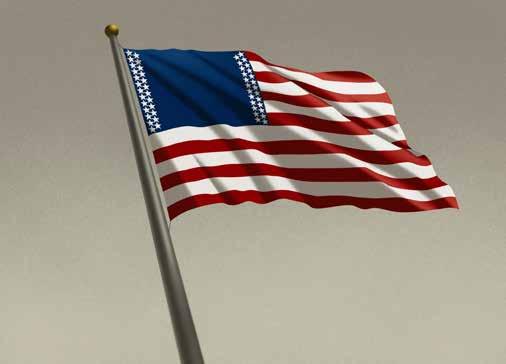 BY THOMAS B. GRIFFITH
BY THOMAS B. GRIFFITH

Church of Jesus Christ of Latter-day Saints has said.
In that straightforward and simple directive, President Oaks captured the animating spirit that created the United States Constitution in 1787. And, without it today, the Constitution will not long survive.
As the late Michael Gerson noted, “Our political system is designed for vigorous disagreement. It is not designed for irreconcilable contempt. Such contempt loosens the ties of citizenship and undermines the idea of patriotism.”
n early July 1787, the delegates who gathered in Philadelphia to create a written constitution for the new nation faced the real prospect of failure. Yet
by mid-September, they had produced the charter that would be the basis for our enduring success as a nation.
In his letter transmitting the Constitution to Congress, George Washington attributed this surprising turn of events — what one popular account of the convention called the “Miracle at Philadelphia” — to the “spirit of amity, and of that mutual deference and concession which the peculiarity of our political situation rendered indispensable.”
Our current political situation — fraught with division and partisan politics — renders indispensable those same qualities.
Constitutional law scholar Derek Webb
explored what Washington meant in a brilliant article that points out that the delegates to the Convention exhibited not only civility in their debates — a good first step — but more important still, they were willing to set aside parochial interests, come to a compromise, and in some instances even give up cherished liberties for the sake of unity.
In other words, the “miracle of Philadelphia” was not a deus ex machina. It came about only because people made an effort to understand one another and were willing to give up some things they valued dearly for the sake of unity. This is the road map for overcoming division — for achieving the miracle.
“On contested issues, we should seek to moderate and to unify,” President Dallin H. Oaks of the First Presidency of The
That is why it is so troubling that in our current political moment, contempt has replaced disagreement. And this contempt, Arthur Brooks observes, is “ripping our country apart. ... Political scientists have found that our nation is more polarized than it has been at any time since the Civil War.” NYU social psychologist Jonathan Haidt warns, “There is a very good chance American democracy will fail, that ... we will have a catastrophic failure of our democracy. ... We just don’t know what a democracy looks like when you drain all trust out of the system.”
What does it mean to “support and defend” the Constitution in this environment?
At the very least, it means that we will “support and defend” the rights protected by the Constitution and the structure of government it creates. But it means much more than that. It means we will “support and defend” the values that gave life to the process by which the Constitution was created. Compromise for the sake of unity is the animating spirit of the Constitution, and it is every bit as vital to its preservation in this moment of toxic political polarization as it was in the summer of 1787.
e all have a lizard part of our brain. It’s called the amygdala. The amygdala doesn’t reason. It’s not rational. When the lizard part of the brain is active, the prefrontal cortex goes offline. It’s not in control anymore. The lizard part of the mind feeds anger. When activated, the lizard part of the brain encourages us to attack.
We have to quiet the lizard part of our brain, but we also have to learn to speak its language. The lizard speaks the language of metaphors. Like a child, the lizard needs to be reassured and it needs to be heard. If a child is afraid, it doesn’t help to say, don’t be afraid. They need to be validated. They need to be heard. They need to be seen.
Social scientists say we’re living in the worst political climate in the United States since the Civil War. Much of that climate is driven by fear, and that fear is based on the fact we live in a time of great change. There are fears about a changing climate. There are fears about artificial intelligence. There are fears about changes to the global
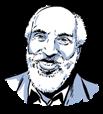
economy. But the change that seems to be triggering the most fear is demographics. We’re seeing this happen all over the world. Populations in some countries are aging, and immigrants are moving in to replace the workforce. It’s happening here too. Our nation is becoming more diverse. Places like Salt Lake City are becoming more diverse. There are Black people, brown people, Asian people moving to Salt Lake. Some will convert to The Church of Jesus Christ of Latter-day Saints. Some will not. What will that mean? Would those who have been here a long time feel like they still belong? Will those who come here feel like they belong? This causes anxiety. It causes fear. We have to recognize this reality, because fear is our base emotion. It’s our first emotion. So it’s very easy to activate. It’s the lizard part of the brain.
Look at what happened in Rwanda in the 1990s, for example. The people who committed genocide against each other by the millions were the same race, same religion, same ethnicity. They actually knew
each other. They lived together for a long time, but partly out of manipulation of the elites, partially by some change that was going on, a story was told that some people were “other” and they were not just other, but they were so other.
This other was perceived as a threat and they started slashing each other with machetes. It wasn’t at a distance. It wasn’t dropping bombs. It was hand to hand slashing people who had been your friends and family just a year before. What happened? And how did that happen? Partially through stories. We process our fear, we understand it through the stories we tell each other. That’s the lizard brain.
When we see our communities changing, what’s the story we’re going to tell to process those changes? Can we make the story about belonging? In this very vitriolic, fractured world, it may sound naive to talk about love and belonging, but that’s exactly what we need to talk about.
The South African Zulu word is sabana suburbano, which means the God in me sees the God in you. It doesn’t mean that you don’t have bad parts. It doesn’t mean you don’t get angry. It doesn’t mean you can’t be flawed. But you still carry that divine. And I recognize that in everyone, even the so-called others. They also carry the divine.
With elections, we need to get beyond just winning and losing. I’m not saying elections aren’t important, or that policies aren’t important. They are, and in that sense winning is important. But what do we do the day after the election? What do we do with the 49 percent who didn’t win? We have to go beyond winning and losing and realize the story we tell about ourselves needs to be about love, and it needs to be about belonging. We all belong to this earth. We all belong to this country. And we all belong together. It can’t be about one community against another. It’s got to be our community.
 BY TIM SHRIVER
BY TIM SHRIVER
ecades ago, Pulitzer Prize-winning author Alice Walker wrote these words that have stayed with me through the years: “No one is exempt from the possibility of a conscious connection to All That Is. Not the poor. Not the suffering. Not the writer sitting in the open field.”
We’re at a moment in history when many Americans doubt Walker’s confidence in human possibility. Americans on all sides question the dignity of those on the “other” side and even rail against the possibility that they are worth the effort. Opinion polls suggest a majority of us believe that we can overcome our hostility to one another, but a majority also believe that there are some who are just too far gone.
I hear this all the time: “Those people are hopeless. I can’t have anything to do with them.” The labels flow: They’re “contemptible,” “disgusting,” “racist,” “socialist,” “godless,” “hateful” or all of the above. With this way of seeing, those on the “other” side are exempt from “the possibility of a conscious connection to All That Is.” They’re too far gone.
I side with Alice Walker. I don’t think everyone has a conscious connection to all that is, but I do agree with her that no one is exempt from the possibility. I think the majority of us are struggling and feeling unfairly judged by the “other side.” The hostility that we levy against others is often hiding the pain and hunger within ourselves. The wounds of injustice left unchanged for generations have intensified
righteous anger. But when anger becomes hatred, divisions intensify and the threats become more virulent.
Things are not as they should be — on that we can all agree. But what’s driving our search for a more just and joyful future can’t be revenge; it has to be our shared search for connection. It’s all about connection; connection to a purpose larger than ourselves that will ultimately help us create a new spirit of us.
Some may find it in nature — I know I often do — simply by marveling at the miracle of a single leaf, the rounded bushy tail of a squirrel or the transcendent complexity of the human eye. Some may find it in prayer and worship, and there too, I often find an experience of “all that is” through the wondrous complexity of silence, the powerful longing of song, the companionship of prayer. I think of millions of moments I’ve experienced in my work with the Special Olympics, when I’ve been in the presence of Special Olympics athletes who reminded me, with their raw and audacious goodness, that we are connected.
To follow Alice Walker, for me, is to be filled with hope in the moment of great changes we’re living right now. We can join together — not as Democrats or Republicans, not as heartland or coastland, not as conservative or liberal — but as people capable of a conscious connection to each other and to all that is.
TIM SHRIVER IS THE CHAIRMAN OF SPECIAL OLYMPICS AND THE FOUNDER OF UNITE.
WHAT IF THERE were a science behind disagreement? And if understanding that science unlocked a better way to engage in policy differences?
That’s one of the goals behind the Minson Conflict and Collaboration Lab (MC²) at Harvard, which studies everything from trust and decision-making to information bias.
MC² is led by Julia Minson, whose research focuses on the psychology of disagreement. Minson suggests adopting an inquiry mindset focused on learning, as opposed to an advocacy mindset focused on persuading.
This means pausing when you encounter an opposing view. Instead of listing all the reasons they’re wrong, stop and consider the experience, skills and access to information that led someone to a different conclusion than yours.
This doesn’t mean you can’t debate, but Minson says most people think they understand another perspective long before they do. By engaging with curiosity, you increase your chances of having a productive conversation that might even result in finding common ground.
—MEGAN FELDMAN BETTENCOURTIn 2003, radio producer David Isay set up a recording booth inside Grand Central Terminal in New York and encouraged dialogue between people who already knew each other, but not as well as they could. By incubating conversations in this way, relationships could deepen — and listeners, on nationwide NPR affiliates, could gain more empathy.
“One Small Step” follows that same formula as Isay’s StoryCorps, with one notable twist: Rather than pairing people who know each other, it brings together strangers from across various cultural, political, social and economic divides.
Participants can come from anywhere in the country, and they’re paired based on their differences — but in most cases, their conversations gravitate toward what they have in common. The format isn’t meant to get them to discuss their biggest disagreements, but to see each other as full human beings instead of caricatured collections of ideologies. To listen, rather than to assume.
—ETHAN BAUER BY TOMICAH TILLEMANN
BY TOMICAH TILLEMANN
enerations of civic dialogue have relied on a simple paradigm to describe the spectrum of ideological belief: conservatives on the right, liberals on the left and moderates in the middle.
This model is increasingly obsolete. Fixing our politics will require a new model with new language for identifying and understanding the forces at work in our system.
To make sense of the disorder consuming the country’s politics, we propose adding a new axis to the models that Americans use to assess would-be leaders. In addition to the traditional measures of left and right, voters should evaluate whether candidates approach their work as “builders” or “performers.”
Like the old left-right diagram, the line between builders and performers is a continuum. Builders are characterized by a commitment to solving problems and bringing disparate people and viewpoints together. They tend to be data-driven, adapt their views in the face of new information, prioritize effective governance and recognize the necessity of choosing between less-than-perfect alternatives in the spirit of
progress toward outcomes preferable to the status quo. They make good-faith efforts to understand others’ points of view and, even when they disagree, they recognize others acting in good faith. Builders can be found across the political spectrum.
Performers tend to simplify and amplify conflict. Barbara F. Walter has referred to this group as “conflict entrepreneurs.” They excel in garnering media attention for profit and boosting their own profiles, but they exploit division and undermine institutions for temporary gain.
Performers are not newcomers to public life. They have always been with us. However, shifts in media and technology have enabled them to weaponize synthetic outrage and made performers increasingly ascendant in American politics. This willingness to empower performers is devastating a once-vaunted political system. From government shutdowns to eroding trust in institutions, performers undermine the architecture that has supported our democracy for centuries.
Our argument is not to persuade anyone to change their views about what they already believe constitutes good public policy, whether that be conservative, liberal or somewhere in between. Rather, we seek to add to the existing lenses through which we evaluate elected officials and other actors in the political sphere. We should begin to identify and support those who exhibit characteristics of builders while still honoring our deeply held policy views.
In a time of political rigidity, embracing this new paradigm won’t be easy. We should offer ourselves and others a bit of grace as we pivot. But the moment demands a different approach. Throughout our history, the heroes who have helped lead the country out of periods of darkness were builders, not performers. We need to identify and empower a new generation of builders if we hope to repeat that process of collective renewal and redemption again today. —with Luke Johnson
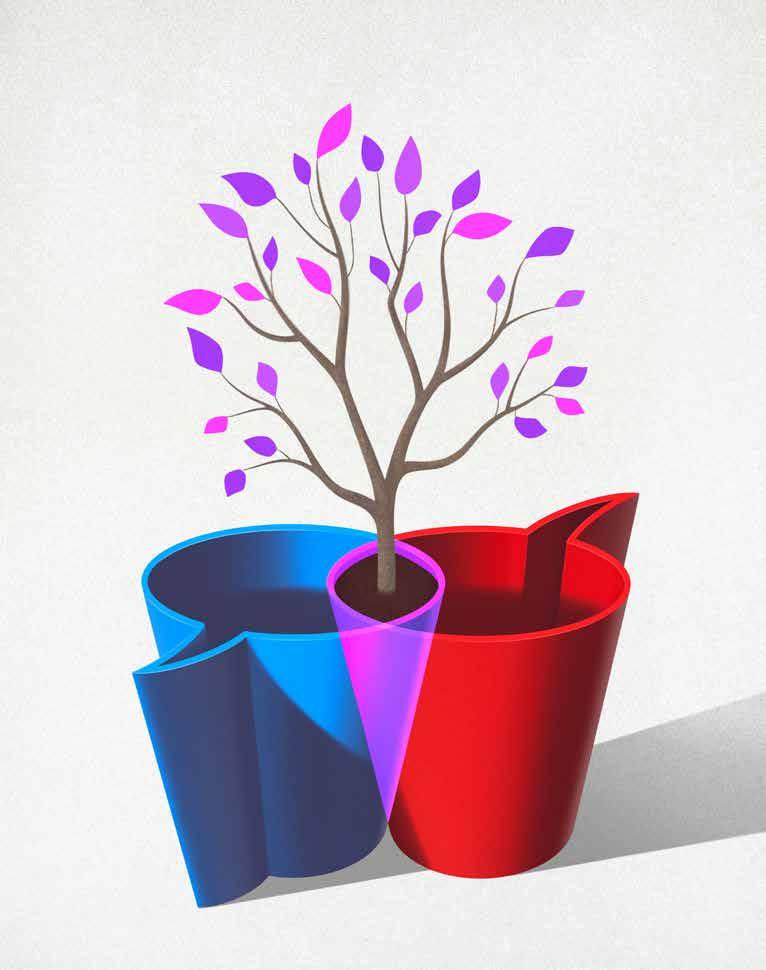
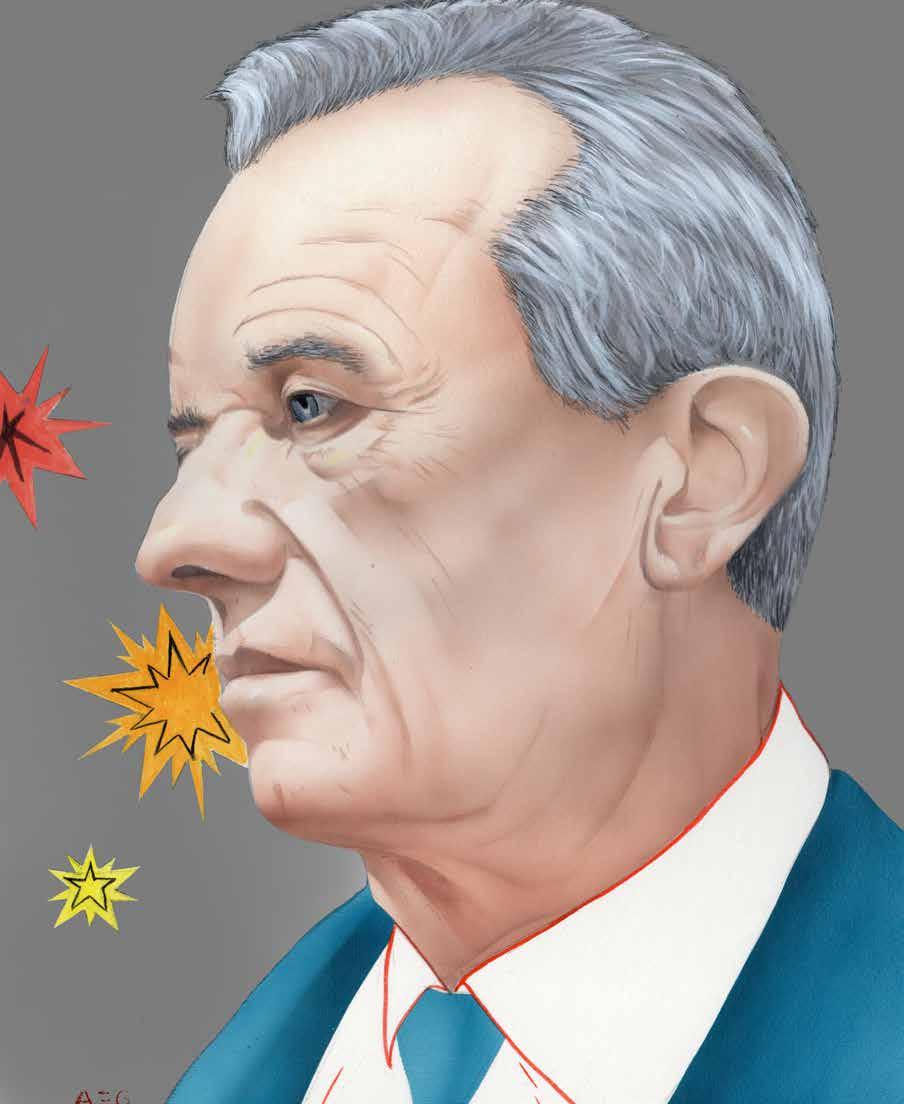
undreds of people are gathered in front of a stage on a lawn just feet from Independence Hall in Philadelphia, where both the Declaration of Independence and United States Constitution were debated and adopted. A red, white and blue banner draped across the stage reads, in gigantic letters, DECLARE YOUR INDEPENDENCE. The crowd skews young and white, with many waving red and blue “KENNEDY24” signs.
Robert F. Kennedy Jr.’s campaign had been coy, inviting supporters and media contacts here on this sunny Monday morning in October 2023 with the promise that he’d be making a “major announcement.” But everyone gathered knows what he’s going to say. Still, when Kennedy is introduced by his wife, Cheryl Hines, who plays Larry David’s long-suffering wife on “Curb Your Enthusiasm,” she does her best to play up the suspense.
“We’re here for a really good reason today,” Hines tells the cheering audience. “One day you’re gonna look back on this day and say, ‘I was there on that day when something really special happened.’”
When Kennedy finally takes the stage, the crowd roars and whistles and calls lovingly to him. He approaches the podium and teleprompters in a well-tailored black suit and a thin blue tie. With his icy blue eyes, familiar jawline and athletic physique — even at 69 years old — he’s a walking invocation of his uncle and father, former President John F. Kennedy and former attorney general and presidential candidate Robert F. Kennedy.
As the cheers level off, Kennedy Jr. briefly rifles through his jacket and pants pockets, then turns to the left of the stage.
“I need my speech,” he says flatly.
At first the audience thinks this is a joke. There’s a wave of snickers. But then it’s clear Kennedy isn’t doing a bit. He’s wearing a live microphone, so the crowd gathered in front of him, the news cameras set up around the lawn, and everyone watching from home can hear his unmistakable voice when he walks to the side of the stage and says to someone unseen, “You can’t read anything.”
Then Kennedy clarifies: “It’s upside down.”
His microphone picks up several other voices, all men, relaying this information.
“It’s upside down.”
“It’s upside down.”
What Kennedy means is that the teleprompters in front of the podium have, for some reason, inverted his pre-written remarks — an inauspicious start to what is, up to this moment, the most important speech of his life.
Soon whatever was wrong is fixed and the candidate is able to deliver his speech. The crowd isn’t bothered at all by the technical glitch, cheering even louder once he finally gets going. But those words, that phrase — it’s upside down — hang in the air.
He begins his remarks by thanking his wife and a long list of family members. He plays to the crowd by joking that the real reason he and Hines came to Philadelphia is to watch the Eagles play. He tells a story about his father winning the Sioux vote in the South Dakota primary the night he was assassinated. Kennedy makes oblique references to “corrupt powers” that have “overtaken our government” and how he’s the candidate fighting for “the ranks of the dispossessed.” He hits some populist talking points about the growing number of Americans who can no longer afford a middle-class lifestyle and the “rising tide of discontent” that’s “swamping our country.”
Soon, though, he winds his way to the big announcement.
“I’m here to declare myself an independent candidate,” he says, receiving a thunderous round of cheering.
The scion of Democratic royalty, who rose to prominence as an environmental lawyer,
had entered the presidential race in April 2023 hoping to challenge President Joe Biden in the Democratic primary. But now he’s officially running independently, as a third party candidate, a none-of-the-above option.
He’s most known for his controversial, heavily refuted theories linking vaccines to autism, chemicals in the water supply to gender dysphoria, and antidepressants to mass shootings. But he’s also polling at between 20 and 25 percent nationally, the highest a third-party candidate has been in polls since Ross Perot in 1992. And perhaps more telling, a recent poll, co-sponsored by Harvard, found that Kennedy enjoys the highest favorability rating of any potential 2024 presidential candidate, in either mainstream party. Forty-seven percent of survey respondents said they had a high approval of Kennedy, versus 45 percent for Donald Trump and 39 percent for Biden.
Though nobody onstage says it, this dramatic political plot twist could prove to be the single most impactful storyline in an election cycle that already includes the oldest sitting president to run for reelection and his likely opponent facing dozens of felony charges in multiple jurisdictions.
Within hours, four of Kennedy’s siblings will release a statement denouncing his run.
“The decision of our brother Bobby to run as a third-party candidate against Joe Biden is dangerous to our country,” read an Instagram post first appearing on the account of his sisters Rory and Kerry. “Bobby might share the same name as our father, but he does not share the same values, vision or judgment. Today’s announcement is deeply saddening for us. We denounce his candidacy and believe it to be perilous for our country.”
The last independent candidate to win the American presidency was George Washington, but because the 2024 election seems headed toward a rematch of the 2020 general election — which was ultimately determined by a slim margin in only a handful of states — a third candidate like Kennedy could certainly take enough Biden or Trump votes to make all the difference.
“We’re seeing the disintegration, in some
ways, of the traditional party structures,” Kennedy would tell Deseret a few weeks later, “and a realignment which has brought together the far-left and the far-right in a kind of populist revolution.”
So how did we get here? How does a consummate insider, an heir to the country’s most famous political dynasty, end up running as an unaffiliated populist outsider?
Well, these days the political landscape in America is a little — for lack of a better phrase — upside down.
THERE’S A CERTAIN type of disaffected political observer in America that, until recently, hasn’t received a lot of attention. Most of them are white, usually under 40, often male. They’re generally dissatisfied with both political parties. In fact, this type of political observer might tell you that Republicans and Democrats are essentially the same, two sides of a single coin.
Most of these people don’t get news from traditional media sources, and their views of the world reflect that. They might disagree about anything from how many people have died of Covid to whether 9/11 was an inside
job. They might have surprisingly strong opinions about things most of the population almost never thinks about: fluoride or chemtrails or who really built the pyramids in Egypt.
And don’t get them started on vaccines.
These are all generalities, of course. But also, you probably know someone like this. You might even have someone like this in your family. Someone who has stumbled upon the “truths” the power brokers of the world don’t want us to know.
This is essentially Robert F. Kennedy Jr.’s base. He speaks to them directly. He’s a famously powerful public orator, despite his voice issues — in his 40s, Kennedy was diagnosed with spasmodic dysphonia, a neurological disorder that produces muscle spasms in the voice box and slight quivers in his sentences — and political speeches are in his blood.
But he doesn’t actually give a lot of stump speeches. No, Kennedy reaches his most enthusiastic supporters as a guest on popular podcasts. Especially free-flow conversational podcasts hosted by stoner-y comedians. Think Joe Rogan, Bill Maher, Theo Von.

Many of these shows have audiences at least as large as the most popular cable news shows, and some are much larger. “The Joe Rogan Experience,” Kennedy’s most prominent platform so far, has an estimated audience of 11 million listeners.
The way Franklin Roosevelt won over America with his fireside chats on the radio. The way Kennedy’s uncle was the first made-for-television president. The way Donald Trump captured part of America’s id on Twitter. That’s the way Robert F. Kennedy Jr. seems custom-made for podcasts — and their cousin, the YouTube video of those podcast recordings.
In June 2023, as he sat in Rogan’s wood panel-and-neon recording studio in Austin, Texas, wearing a light blue button-down with the sleeves rolled up to his elbows, Kennedy seemed charming and frank and open in a way that doesn’t come across in 30-second sound bites or quotes in a daily newspaper. He wore jeans and a green button-down on Maher’s “Club Random” podcast that same month, taking sips from a mug as Maher smoked and made himself cocktails. (Kennedy says he hasn’t had a drink or used illegal drugs in decades.)
Kennedy’s winding, sometimes-paranoid, difficult-to-fact-check diatribes fit perfectly on shows where episodes can stretch for two hours or more. His stories are filled with A-list celebrities he’s known over the years, offering listeners a rare peek behind a curtain of privilege. His inclination to eloquently unravel convoluted theories about everything from vaccines to the war in Ukraine to the powerful forces who murdered his uncle and father makes him the ideal guest for anyone tasked with creating several hours of compelling content.
The fact that Kennedy’s Facebook and Instagram accounts were banned for spreading misinformation ironically lends him a level of credibility in this world. The censorship is seemingly confirmation that he might be revealing secrets the most powerful people in society don’t want the public to hear. (His accounts have been reinstated.)
He’s said himself, in his own conspiratorial
way, that podcasts are the most important component of his campaign, telling The New Yorker in June: “I do have a chance with podcasts, because I’m able to outrun the censorship juggernaut.” And it seems to be working. The comment sections on virtually every YouTube video featuring the candidate are filled with throngs of people expressing their undying affinity for him — vowing to vote for him.
Kennedy gets the most attention for his comments on vaccines, which often differ greatly from the most mainstream medical experts, but the topics of discussion vary widely. He seems to offer a little something for voters across the political spectrum. He’s said that if he’s elected, he’d “seal the border.” He’d legalize marijuana and psychedelic drugs. He says abortion is a “tragedy,” but that it should be legal. He’d support regulations that drastically cut greenhouse gases, like the Green New Deal.
On Rogan’s show, Kennedy explained that not only does he believe that America’s intelligence agencies were responsible for killing his uncle in Dallas 60 years ago, but that he thinks there’s a chance those agencies might be after him, too.
“I’ve got to be careful,” he told Rogan. “I’m aware of that danger. I don’t live in fear of it, at all. But I’m not stupid about it and I take precautions.”
With Maher, he discussed the size of former President Lyndon Johnson’s head, a prank Kennedy once played on J. Edgar Hoover, how former Fox News CEO Roger Ailes was funnier than most people would expect and the woes of the American medical system.
Kennedy has appeared on comedian Theo Von’s show, “This Past Weekend,” multiple times. When he was on in September, Von started the conversation by noting how much better he feels when he spends time in the sun, earnestly asking Kennedy: “Are humans part plant too, do you think?” Forcing Kennedy to explain that no, humans are not, in fact, part plant.
That episode has been viewed nearly one million times on YouTube alone.
I MET ROBERT F. Kennedy Jr. once during a different chapter in his life. It was nearly 20 years ago, when I was a college student in Texas. He was an environmental activist, on campus to give a speech. All these years later, I don’t remember much of what he said. I recall him telling a story about waiting all night in a lawn chair by a river in an effort to catch polluters in the act. I remember him pointing out so confidently that all the mainstream scientists in the world knew the planet was warming.
At the end of his talk, I asked him a question: How would he respond to climate change deniers who accused activists like him and Al Gore of hypocrisy because they flew around on private jets while preaching about cutting carbon emissions?
Kennedy didn’t flinch at the implication. Instead he quickly explained that the problem — and the solution — were both macro, referring repeatedly to “CAFE standards,” or “corporate average fuel economy,” a term I’d never heard before.
He was so inspirational that after his speech I asked him if he’d pose for a photo with me, something I’d never done with anyone before. (My mom, a Catholic boomer who grew up listening to folk songs about John and Bobby Kennedy, still has the picture framed in her living room.) I remember thinking at the time that if he were running for president, I’d probably vote for him.
Even then, it seemed like he’d experienced so much. He was born into one of the most important and star-crossed families in American history. He had an up-close view of his uncle John F. Kennedy’s presidency and his father’s work as both attorney general and senator. In 1963, when the boy known then as Bobby Jr. was 9, he saw the way his uncle’s assassination devastated his family. Then five years later, when he was 14, his father and namesake — who was running for president — was also assassinated, in the kitchen of a hotel in California.
Bobby Jr. struggled with drugs, but went to Harvard, graduating in 1976. By 1983, when he was 29, Kennedy was addicted to heroin, and arrested for possession of narcotics

after becoming ill in an airplane bathroom. He turned his life around and dedicated his career to protecting the environment from corporate polluters. In 2004, around the time I met him, he published a book about how George W. Bush was the worst environmental president in history.
Not long after that, though, his path shifted. In 2005, he wrote an article for Rolling Stone and Salon linking childhood vaccines to autism, an essay both publications later retracted. Kennedy cited this as evidence that pharmaceutical companies and government health agencies were colluding with the mainstream media to suppress the “truth.”
He’s insisted over the years that he isn’t anti-vaccine, that in fact all six of his children are vaccinated and that his own vaccine schedule is up to date — except for Covid. But in the last two decades, he’s become the most high-profile vaccine skeptic in America.
For most of that time, the topic didn’t overlap much with politics. Vaccines were one of those rare things 88 percent of Americans agreed on. But that changed around the pandemic, when shots became a wedge issue. More than three years later, some states are still passing laws forbidding vaccine mandates.
The more journalists and social media companies criticized or censored Kennedy, the more his message spread, and the media scrutiny sometimes seemed to only validate his conspiratorial claims. Which resulted in even more people, both conservatives and liberals, seeking out and sharing his posts, his speeches, his podcast appearances.
In April 2023, he announced that he was following in the footsteps of his father and two uncles and running for president. But as his platform grew, so did the amount of scrutiny he received. In July he was recorded at what he thought was an off-the-record dinner, sharing a bizarre theory that Covid-19 was targeted to attack white and Black people, and that those most immune were Ashkenazi Jews and Chinese people.
His comments were debunked by the author of the very study cited in his claims and he received wide, bipartisan condemnation. Democratic Rep. Josh Gottheimer of New Jersey tweeted that Kennedy was a “disgrace,” adding, “For the record, my whole family, who is Jewish, got Covid.” Republican and then Speaker of the House Kevin McCarthy announced that he disagreed with “everything” Kennedy had said — but still refused to disinvite him to a GOP-led congressional hearing on censorship. Ironically, Kennedy, once again, used this as an example of powerful people trying to censor him.
LISTENING TO HIM speak, whether it’s on a dais or podcast, it’s obvious Robert Kennedy Jr. is an erudite man, with a great education and access to cutting-edge scientific studies. So how does someone like this become a purveyor of bizarre conspiracy theories?
It’s impossible to know for sure, but having an uncle killed in America’s most infamous murder mystery — an event that may have generated more conspiracy theories than everything else in history combined — would certainly be a nudge. Kennedy said he also doesn’t believe Sirhan Sirhan killed his father, contradicting eyewitnesses.
As an environmental attorney, Kennedy also battled some very real conspiracies: corporations with enough money and power
to get laws changed and cover up their misdeeds. It’s not a huge leap of logic to go from there to pharmaceutical companies, which have had to collectively pay billions in lawsuit settlements over the last two decades.
In the most generous read of Kennedy’s campaign, you could argue that speaking to and for the suspicious conspiracy theorists, and the unengaged podcast listeners of America — the audiences who tune in to hear him answer questions about whether people are plants — he’s actually upholding some part of his family’s traditional populist values in a very 2024 way.
In the past, someone with these beliefs would’ve been relegated to low single digits in polling. The fact that Kennedy is as popular as polls show is a testament to his family’s history. It’s also an indication of how deeply
“Democrats are frightened that I’m going to spoil the election for President Biden. And the Republicans are frightened that I’m going to spoil it for President Trump. The truth is, they’re both right.”
unpopular the two leading candidates are at this point. It’s why Kennedy has a chance to make such a big impact. He doesn’t have to win to change the course of history. He just has to have his name on the ballot in a few swing states.
Anyone who says they know for sure which candidate Kennedy’s presence could hurt or help is lying. But his favorability has been higher among Republicans. A New York Times/Siena College poll of swing states in October found that he’d pull more voters from Trump. A Quinnipiac poll that had Kennedy at 22 percent when matched up with Biden and Trump showed that he pulled from both opponents, though Biden maintained a 3-point lead over Trump. A Politico analysis a few weeks after Kennedy’s speech in Philadelphia found that donations
to his campaign more often come from people who’d given to Trump in the past.
It’s also telling that Democratic Party leaders have been largely silent on the topic of Kennedy’s effect on the Biden campaign, while Trump surrogates have publicly criticized him. The day after Kennedy declared his independence, Trump campaign spokesperson Steven Cheung told CNN: “An RFK candidacy is nothing more than a vanity project for a liberal Kennedy looking to cash in on his family’s name.”
While talking to Trump campaign volunteers in Iowa, Donald Trump Jr. said he thought Kennedy’s campaign was “a Democrat plant to hurt the Trump thing.”
Former President Trump hasn’t said much about Kennedy publicly, but Vanity Fair’s Gabriel Sherman reported that Trump has privately expressed worry about Kennedy potentially spoiling a rematch with Biden. One Republican strategist called Kennedy “a big concern.”
Perhaps this is why former Trump strategist Steve Bannon and Roger Stone, one of Trump’s earliest political advisers, have floated the idea of Trump picking Kennedy as a running mate. Stone has called the pairing a “dream ticket.”
During his going-independent speech in Philadelphia, Kennedy addressed this question of who his campaign was helping and who it was hurting.
“The Democrats are frightened that I’m going to spoil the election for President Biden,” he told the crowd. “And the Republicans are frightened that I’m going to spoil it for President Trump. The truth is, they’re both right. My intention is to spoil it for both of them.”
The people who end up voting for Robert Kennedy Jr. will do it for all sorts of reasons. Some of those reasons are probably going to be pretty kooky. And some will be completely understandable. A vote for Kennedy is a vote against both parties. It’s a decision not to make a decision.
Meanwhile, the people who pick the next president will be voting either Republican or Democrat.

For the last half-century, American politics has been defined on a left and right spectrum. What if it’s a myth?
By HYRUM LEWIS Illustration by DAVIDE BONAZZITHIS BECAME OBVIOUS when a mob of American citizens, upset with the results of the 2020 presidential election, stormed the Capitol building in Washington, D.C., to stop Congress from tabulating the electoral votes. In order to work, democracies require citizens who respect the rights of individuals, defer to the outcomes of elections, and abide by the rule of law. But today’s toxic political culture has caused many Americans to abandon these vital norms. Ideological tribalism and partisan hatred have become so rampant that frightening numbers of American citizens countenance violence against their political opponents to get their way.
How did we get to this point? The standard explanations — media echo
chambers, party polarization, racism, status anxiety, misinformation, demographic sorting and even fear — tell only part of the story. An important but overlooked contributor to American political dysfunction is a widespread misunderstanding of ideology.
The standard view of American political ideology says that politics is largely a clash between two worldviews that can be modeled on a political spectrum. The left-wing worldview, we are told, is expressed in a preference for greater government control of the economy, social permissiveness and foreign policy dovishness, while the right-wing worldview is expressed in a preference for free markets, social restriction and foreign policy hawkishness. Taking
these worldviews to extremes leads to totalitarianism — fascism at the far right or communism on the far left — while the more respectable positions exist at the center left (“progressivism”) and center right (“conservatism”).
This model of politics frames our thinking, shapes our language and sets the terms of public debate. It creates a sense of personal identity for millions of Americans, is taught in classrooms across the country, and is used in nearly every political discussion, whether on social media, in the halls of Congress, on cable news or around the dinner table. It is, without question, the most influential political paradigm of 21st-century America.
It is also completely wrong.
IN THE LAST HALF-CENTURY, Americans have increasingly used a simplistic left-right spectrum to describe politics and, at the same time, politics has become ever-more divisive, hostile and rhetorically extreme.
This is not a coincidence. Thinking of politics along a spectrum contributes to the rancor and dysfunction that characterize public discourse today. While most people acknowledge that politics has become increasingly tribal, they generally assume that there must be some bedrock philosophy or value that each tribe rallies around. There is not. Terms are useful inasmuch as they are predictive, and it turns out that ideological terms are only predictive across contexts describing who people support (tribe) but not what they support (a philosophy). The single biggest fallacy in politics today is that the political spectrum refers to divergent worldviews when, in reality, it refers only to divergent tribes.
In the 2024 election season, for example, candidates will be discussing topics as diverse as abortion, budget deficits, immigration, inflation, climate change, aid to Ukraine, drug control and affirmative action, but contrary to a century of conventional wisdom, we can’t model all of these issues on a single spectrum.
Where on a unidimensional spectrum do we place someone who wants both more redistribution of wealth and more restrictions on abortion? Where do we place someone who wants aggressive action to stop both climate change and crime? The left-right binary spectrum we use to understand American politics presumes that politics is about one thing, but the reality is that politics is about many things and complex humans in such a complex realm will have many sets of diverse views that can’t possibly be modeled on one line.
This seems obvious, but one of the most prevalent myths of our time is “political monism” — the idea that politics in America can be defined by a single issue. For most people, that issue is “change”: those who favor change are on the “left” and support the bundle of policies considered “progressive,” while those who oppose change are on the “right” and support the bundle of policies considered “conservative.” The prevailing
wisdom says that a person’s orientation on the single issue of change determines their position on all other issues.
Political monism is the dominant paradigm among politicians, academics, journalists and the politically active public. Nearly every Republican running for office this year would say that they support Republican policies because they are “con -
Ideological tribalism and partisan hatred have become so rampant that frightening numbers of American citizens countenance violence against their political opponents.
servative” while nearly every Democratic candidate would say that they support their party’s policies because they are “progressive.” They have convinced themselves that the position they take on the one big issue determines their position on all other issues.
This conception of politics is wrong. Not only does political monism defy common sense, but there is simply no evidence for it. The reality is that politics, like any other complex realm of life (such as medicine, physics, art or chemistry), is pluralistic. It is about many things, not just one big thing. Yes, there are two main political parties, but each party stands for a basket of unrelated policies, some of them good and some of them bad.
and this idea of a left-right binary has many negative consequences. Here are just a few:
• Political monism gives the illusion of omniscience. The reality is that we are all flawed humans with incomplete knowledge trying to find workable solutions to difficult public problems, but monism tells us that we can know the correct answer to every public problem simply by choosing the correct side of the one big issue. Thus, the political spectrum turns us from scouts into soldiers and tells us that solving political problems is as easy as defeating the forces of darkness on the other side.
• Political monism is largely responsible for the cancel culture that has taken such a firm hold of society. If all of the policies of my side are rooted in a single righteous principle (progressivism or conservatism), why would I allow someone who disagrees to speak when I know that their position is rooted in evil? If all left-wing policies promote progress, then an opponent of any left-wing policy is, by definition, an opponent of progress who doesn’t deserve to be heard. If all conservative policies defend traditional values, then any progressive policy should be viewed as an attack on those values.
• Political monism also turns the virtue of principled dissent into a vice. Since each party stands for a bundle of unrelated positions, we should applaud those who are willing to speak out against the failings of their own side, but the monist delusion tells us that since all the policies of one’s own party are connected by one key value (“progressivism” or “conservatism”) then breaking with the party means betraying that sacred value. Deviation from the party line isn’t courage; it is “selling out.” No wonder dissenting politicians like Jeff Flake or Tulsi Gabbard have been run out of their parties as traitors — there can be no room for disagreement when policies are connected by a single righteous principle. Monism takes the admirable trait of independent thinking and reframes it as a lack of conviction.
• Political monism reduces our ability to compromise. Historically, politicians have cooperated with those of the other party in the name of putting the public interest ahead of partisan interest, but today’s political monism tells us that such compromises amount to “cooperating with evil.”
• Political monism serves to misinform and confuse. It leads us to believe things
about people and groups that simply aren’t true. George W. Bush expanded the size and scope of government far more than did Barack Obama and yet Obama (“on the left”) was routinely denounced as a socialist and Bush (“on the right”) was routinely denounced as a free market fundamentalist. Monism led people to believe lies about our presidents and their records.
Perhaps most tragically of all, political monism reduces our capacity to think. People who conceive of politics in terms of a spectrum demonstrate lower cognitive ability, are more given to motivated reasoning (allowing emotions to affect how information is processed), are less intellectually accurate, are philosophically inconsistent, and are more likely to believe outright falsehoods. One of the greatest ironies in all of this is that people adhere to political monism in the name of advancing a righteous principle (“progressivism” or “conservatism”) and yet the research shows that monists are generally far less principled than political pluralists.
IF POLITICAL MONISM is false and damaging, why does it persist? One reason is that as a theory of political science, monism explains the curious fact that distinct issue positions tend to bundle together in a binary pattern. That is, someone who supports abortion-rights is also more likely than the average person to believe in raising income taxes while someone who is anti-abortion is also more likely than the average person to believe in cutting income taxes. Many see this correlation and draw the understandable conclusion that a person’s views on taxes and abortion must be connected at some fundamental philosophical level. Since political beliefs tend to cluster into two major bundles,
people assume that there must be a single issue underlying all others leading to this binary pattern.
But we don’t need political monism to explain this correlation; tribal conformity explains it much better. Policies tend to coalesce into two bundles not because there are two main approaches to one big issue (progressive or conservative) but because there are two main political tribes in America (Democrat and Republican) and people tend to conform to the positions of their tribes. Political monism says that people start with a philosophy (e.g., for or against change), adopt political positions based on that philosophy, and then join the tribe that shares their positions. Actually, this is backward. People first anchor into tribes — because of family, peers, leaders or a single issue they care about — adopt the positions of their tribe for social reasons, and then invent an after-the-fact story explaining how all of those positions are philosophically connected. Political tribes naturally tend to be binary (because of the rule-oppose nature of politics), but political dispositions do not. There is a reality of binary political tribes, but not a reality of binary political outlooks — that is the myth of left and right.
Of course, this doesn’t mean that nobody in politics has any principles, it only means that conformity explains the correlation between distinct issues much better than political monism. For example, someone who is strongly pro-life for principled reasons is likely to associate with other pro-lifers, join the Republican Party, start watching Fox News, identify as a “conservative” and then adopt the tribe’s position on income taxes. It’s not that an underlying “anti-change” worldview makes someone against both abortion and taxes, but that people anchor
The left-right binary spectrum we use to understand American politics presumes that politics is about one thing, but the reality is that politics is about many things.

People first anchor into tribes — because of family, peers, leaders, or a single issue they care about — adopt the positions of their tribe for social reasons, and then invent an after-the-fact story explaining how all of those positions are philosophically connected.
into tribes for principled reasons and then adopt their other policies.
If this seems a little confusing, here’s an analogy that can help: Think of political parties like baskets of groceries. Currently, if we go to the store, we just pick the products we like, one by one, and put them in our basket. But what if the grocery store required us to pick one of two preselected baskets full of random products? We would naturally choose the basket that had more of what we liked and less of what we didn’t like, but we wouldn’t pretend that everything in the basket we chose was somehow philosophically connected and therefore better than everything in the alternative basket.
And yet this is exactly what we do in politics: The monist myth tells people that all the many political “products” (issues) in their “basket” (party) are philosophically united (by “conservatism” or “progressivism”) and therefore superior to all the products in the other basket. This leads people to consider anyone who chooses the other basket as wrong about all products and therefore stupid and/or evil for choosing that basket. While it’s true that we can’t vote issue by issue — we must choose either the Democrat or Republican “baskets” — we can think issue by issue by rejecting political monism.
Doing so solves many of the puzzles that are currently baffling political analysts. Many are confused, for instance, about how conservatives who had once been such avid champions of spreading freedom in the world can now be so indifferent to the plight of Ukrainians. If the conservative philosophy led people to support Iraqi freedom, why isn’t it now leading them to support Ukrainian freedom? The answer is that it was never about philosophy. Conservatives
didn’t tend to support the Iraq War because of an anti-change worldview (indeed, invading Iraq was highly revolutionary) but because of tribal solidarity. The historical record shows that support for military intervention by self-described liberals or conservatives is entirely contingent upon who is in the White House.
Tribalism also helps us solve the puzzle of conservative support for Donald Trump and “National Conservatives” more generally. Many see self-described conservatives advocating expanding government power for nationalist ends and ask, “How is it that these conservatives can support big government when conservatism is a philosophy of limited government?” The answer is that conservative policies do not emerge from a philosophy, but from a tribe that is always changing as the coalition changes.
Although tribal conformity is a much better explanation for issue-position bundling than political monism, committed partisans have a hard time accepting this reality. By and large, they prefer to believe that a single issue on a spectrum, not socialization, explains the policies they support. Why the self-delusion? Because it allows them to be tribal without feeling tribal. It allows them to conform to everything their team supports while feeling like they are being principled in following the philosophy of “progressivism” or “conservatism.” We humans are naturally tribal beings — we need groups to belong to and identify with — and although nearly everyone understands this, what is far less understood is how much we humans are given to disguising our tribalism with noble-sounding stories, often without even knowing it. Political monism makes us feel like philosophers when we are behaving like lemmings.
Even as there are individual psychological incentives to perpetuate the monist delusion, there are also institutional incentives. Our two main parties propagate the myth of left and right because it creates loyalty, energy and support among the membership. The falsehood that a party stands for a righteous philosophy creates an angry and motivated base that will spend much more time, effort and money advancing the party’s cause. For instance, the Republican Party is far more likely to raise funds with a letter that says, “If you want to promote the cause of conservatism and defeat the evil forces of left-wing extremism, donate to the Republican Party today!” than a letter that says, “The Republican Party stands for many unrelated issues, but we hope you agree with enough of them to donate.” We find similar institutional incentives in today’s news and information outlets.
We have a choice to make in this upcoming election season. We can either cling to the monist delusion and talk about politics in terms of a left-right binary, with all of the confusion and rancor this entails, or we can embrace the pluralist reality and see our tribes as grab bags rather than philosophies. Not only would the pluralistic outlook reduce hostility and open our minds, but it would also help us see more clearly to understand and evaluate the candidates and movements that are growing in prominence this year. We need less talk of “left-right,” “progressive-conservative,” and more talk of actual issues. Ultimately, we need more political conversations based in reality and fewer based in the myth of left and right.
ADAPTED

TAKE
POLITICS ISN’T
All politics is influenced by identity. That’s not because all politics is literally identity politics. It’s because all of human cognition is influenced by identity, and politics is part of human cognition. We cannot sever ourselves from our circumstances. We will never fully know how fully we’ve been shaped by our contexts. Who we are, where we grew up, whom we’ve learned to trust and fear, love and hate, respect and dismiss — it’s deeper than conscious thought. The slate of mental processes built around the millisecond it takes an identity to activate isn’t something we can simply slough off.
But if we can’t turn off the power identity holds over us, we can harness it. Remember, our identities are manifold. “Republican” is an identity, as is “Democrat.” But so is “fair-minded,” or “Christian,” or “curious,” or “New Yorker.” It can be as much an identity to see yourself as an advocate for the poor, for animals or for children as to be a member of a political party. The thing about the organized identities promoted by political coalitions is that there is a massive apparatus for defining, policing and activating them. If you want to get out of that superstructure, it takes work. But it is possible.
If the beginning of wisdom on identity
BY EZRA KLEINpolitics is recognizing that all of us are engaging in it all the time, the path of wisdom on identity politics is to be mindful of which of our identities are being activated, so that we can become intentional about which identities we work to activate. Like a muscle or a neural pathway, the identities we use most grow strongest, the ones that lie fallow weaken. We can wield that to our advantage. Doing so starts with mindfulness.
reminders of the red-blue divide and which side of it you’re on. Religious life is meant to pull you in one direction, hipster consumerism drags you in another, and hey, how about that local sports team whose paraphernalia is literally everywhere? There are massive, well-funded efforts strengthening our identities everywhere we turn. It takes work to see this happening within us, in real time. But it’s possible.
THE TIME SPENT SPRAYING OUTRAGE OVER WHAT TRUMP OR BIDEN JUST SAID IS BETTER SPENT CHECKING IN WITH WHAT’S HAPPENING IN YOUR OWN NEIGHBORHOOD.
Yeah, I know. Of course, an essay by a liberal Californian vegan centers around a call to mindfulness. But slowly take 10 breaths, making sure your mind doesn’t wander, and hear me out. Our environments are designed to activate some identities and not others. American life is full of American flags, for instance. Political life is full of
The practice of mindfulness is separable from the practice of meditation. Robert Wright, the eminent political journalist and Buddhist scholar, writes, “The word ‘mindful,’ as used around the time of (its) translation, meant ‘taking thought or care of; heedful of; keeping remembrance of.’ In other words: a mindful person is an acutely aware person, a person who proceeds with careful attention to all relevant factors.”
In this case, the relevant factor I’m urging you to pay attention to is identity. What identity is that article invoking? What identity is making you defensive? What does it feel like when you get pushed back into an identity? Can you notice when it happens? If you log on to X (formerly known as Twitter) nine times a day, can you take a couple breaths at the end and ask yourself how differently you feel from before you logged on?

The idea here is to become more aware of the ways that politicians and media manipulate us. There are reams of research showing that our reaction to political commentary and information we don’t like is physical. Our breathing speeds up, our pupils narrow, our hearts beat faster. Trying to be aware of how politics makes us feel, of what happens when our identities are activated, threatened or otherwise inflamed, is a necessary first step to gaining some control of the process.
That is not to say we should become afraid of our identities being inflamed or strong emotions being forced forward. It’s to say we should be mindful enough of what’s happening to make decisions about whether we’re pleased with the situation. Sometimes it’s worth being angry. Sometimes it’s not. If we don’t take the time to know which is which, we lose control over our relationship with politics and become the unwitting instrument of others.
We all inhabit a larger context that shapes our actions. Sometimes that context is difficult to change. But sometimes it is changeable. Our informational environments are one of those things. Once we recognize that we exist amid an omnipresent conspiracy to manipulate our identities, we can begin the hard work of fashioning our environment to shape and strengthen the identities we want to inhabit. And I have a suggestion of where to start.
In March 2018, The New York Times published an article I think about often. Titled “The Man Who Knew Too Little,” it tracked the bizarre world Erik Hagerman had constructed for himself after the election. Depressed by the results, he decided he didn’t want to know a thing about Donald Trump. Nothing. “It was draconian and complete,” he said. “It’s not like I wanted to just steer away from Trump or shift the conversation. It was like I was a vampire and any photon of Trump would turn me to dust.”
And so he set off building his bubble. A former Nike executive, he now lives alone on a pig farm in southeastern Ohio. He listens to white noise tapes at the coffee shop. He scolds friends who mention politics. He never looks at the news or social media. He goes to stores early to avoid overhearing talk of current events. When he visited his brother in San Francisco, “strict arrangements had to be made — the Sunday newspaper kept out of sight, the TV switched off, his teenage niece and nephew under special instructions.”
So far, so nuts. But then, at the end, the story changed. Amid his withdrawal, he had focused his time on “a master project, one
THE IDEA IS TO BECOME MORE AWARE OF THE WAYS THAT POLITICIANS AND MEDIA MANIPULATE US. THERE ARE REAMS OF RESEARCH SHOWING THAT OUR REACTION TO POLITICAL COMMENTARY AND INFORMATION WE DON’T LIKE IS PHYSICAL.
that he thinks about obsessively, that he believes can serve as his contribution to American society.” He had purchased 45 acres of land that used to sit atop a strip mine. The land became “his life’s work.” He is restoring it, protecting it, turning it into something his community can enjoy. Hagerman, it turns out, hadn’t disengaged from civic life. He had simply disengaged from national politics to focus on local change. And he had constructed an informational ecosystem to support that choice. Perhaps he went too far in that project — way, way too far — but most of us are not going far enough.
I saw the article because the internet had erupted in outrage over it. “The New
York Times managed to find the ultimate beacon of white privilege — and, arguably, the most insufferable person in the world,” read a representative tweet. Who did Hagerman think he was? This rich white guy who probably wouldn’t suffer at all under the Trump administration. Who was he to tune out the news the second it made him feel sad?
But then, who did we think we were? Were those of us sending angry missives into the ether really doing more than this guy who was restoring land to gift back to his neighbors?
My point is not that we should all go informationally Galt. But I’ll be blunt here in a way that cuts against my professional interests: We give too much attention to national politics, which we can do very little to change, and too little attention to state and local politics, where our voices can matter much more. The time spent spraying outrage over what Trump or Biden just said is better spent checking in with what’s happening in your own neighborhood.
“There are over 500,000 elected officials in the United States, only 537 of whom serve at the federal level,” writes Daniel Hopkins in “The Increasingly United States.” The 537 federal officials are the ones we have the least power to influence, if only because they have, on average, the most constituents. But we often don’t know the names of the officials nearest to us, even though they’d be glad to meet for coffee.
This isn’t because we’re lazy, bad people. It’s because media has nationalized, and there’s been a particular reaping at the state and local level. I don’t have an answer for that — revitalizing state and local journalism is an essay for another time — save to counsel effort. It’s possible to make local and in-state news sources a bigger part of your media diet and thus make your local political identity more powerful. It’s just a lift, particularly when those stories aren’t being pushed at you by friends on social media
or covered by the national publications you love.
But there’s a real reward from rooting more of our political identities in the places we live. First, we tend to live among people more like us, so the politics is less polarized. Second, the questions are often more tangible and less symbolic, so the discussion is often more constructive and less hostile. Third, we can have a lot more impact on state and local politics than on national politics, and it feels empowering to make a difference. And fourth, even if your heart lies in national politics — I’m a journalist who covers national politics, I get it — being involved in state and local politics will make you much more effective, both because it’s valuable experience and because local officials eventually become federal officials, and they keep in touch with the people they’ve known along the way. When the next presidential campaign rolls around, the people they’re going to want most as volunteers are the folks who already know how to organize in their communities.
Again, I’m not counseling you to abandon national politics. But audit your informational diet and ask what percentage of political stories you read are national versus state or local. Watch yourself for a week and reflect on how much of your political emotion and energy attach to the national stories. If that mix is overwhelmingly tilted toward the national scene, consider tilting it back.
I’ll be honest: Even writing these suggestions for solutions makes me a little queasy. American politics is complex and unpredictable, and sometimes plans that are heralded as overdue solutions in one age become the defining problems of the next.
But then, that’s the point, isn’t it? There isn’t an end state to American politics. The search for a static answer will always be folly. There is no one best way for the system to work. There is only the best we can do
right now. And, if we do a good enough job at it, we will see today’s successes ossify into tomorrow’s frustrations. What works in one era fails in the next. That’s OK. The point is to get to that next era with the most progress and the least violence.
I get asked often whether I’m optimistic or pessimistic about American politics. I think I’m an optimist, but that’s because I try to hold to realism about our past. For all our problems, we have been a worse and uglier country at almost every other point in our history. You do not need to go back to the country’s early years — when new arrivals from Europe drove out and murdered Indigenous peoples, brought over millions of enslaved Africans, and wrote laws making women second-class citizens
TRYING TO BE AWARE OF HOW POLITICS MAKES US FEEL, OF WHAT HAPPENS WHEN OUR IDENTITIES ARE ACTIVATED, THREATENED OR OTHERWISE INFLAMED, IS A NECESSARY FIRST STEP TO GAINING SOME CONTROL OF THE PROCESS.
— to see it. Just a few decades ago, political assassinations were routine. In 1963, President John F. Kennedy was murdered on the streets of Dallas. In 1965, Malcolm X was shot to death in a crowded New York City ballroom. In 1968, Martin Luther King Jr. was killed, as was Robert F. Kennedy. In 1975, Lynette “Squeaky” Fromme, standing about arm’s length from President Gerald Ford, aimed her gun and fired; the bullet failed to discharge. Harvey Milk, the pioneering gay San Francisco city supervisor, was killed in 1978. President Ronald Reagan was shot in 1981; the bullet shattered a rib and punctured a lung.
For much of the 20th century, the right
to vote was, for African Americans, no right at all. Lynchings were common. Freedom Riders were brutally beaten across the American South. Police had to escort young African American children into schools as jeering crowds shouted racial epithets and threatened to attack.
Violence broke out at the 1968 Democratic National Convention. Urban riots ripped across the country. Crime was rising. The United States launched an illegal, secret bombing campaign in Cambodia. National Guard members fired on and killed student protesters at Kent State. Richard Nixon rode a backlash to the civil rights movement into the White House, launched an espionage campaign against his political opponents, provoked a constitutional crisis, and became the first American president driven to resign from office by impeachment proceedings.
This is not a counterintuitive take on American history, by the way. Among experts, it is closer to the consensus. The Varieties of Democracy Project, which has been surveying experts on the state of global democracies since 1900, gave the U.S. political system a 48 on a 1 to 100 scale in 1945 and a 59 in 1965. It was only after the civil rights movement that America began scoring in the ’70s and ’80s, marking it as a largely successful democracy.
The era that we often hold up as the golden age of American democracy was far less democratic, far less liberal, far less decent, than today. Trump’s most intemperate outbursts, his most offensive musings, pale before opinions that were mainstream in recent history. And the institutions of American politics today are a vast improvement on the regimes that ruled well within living memory. If we can do a bit better tomorrow, we will be doing much, much better than we have ever done before.
It is now difficult to remember that, until a few decades ago, most Democrats did not hate Republicans, and most Republicans did not hate Democrats. Very few Americans thought that the policies of the other side were a threat to the country or worried about their child marrying a spouse who belonged to a different political party.
All of this has changed, at rapid speed and to an astonishing degree. Sixty percent of Democrats and 63 percent of Republicans would, according to Gallup, now balk at their son or daughter marrying a supporter of a different political party. Meanwhile, the number of political partisans who think that the country could withstand a victory by the other side has fallen precipitously. In the run-up to the 2020 presidential elections, both 9 out of 10 supporters of Joe Biden and 9 out of 10 supporters of Donald Trump were convinced that a victory by their opponent would cause “lasting harm to the United States.”
As somebody who has lived in many different countries — including Germany, Italy, France and the United Kingdom — before coming to the United States, I have long had the sense that American levels of partisan animosity have become exceptionally high. Although, in plenty of other
nations, the left and the right mistrust and dislike each other, it never felt to me that their hatred was quite so personal or intense as in the U.S.
A study published in 2022 by the Carnegie Endowment for International Peace confirms that impression. Drawing on V-Dem, an international dataset published
NO ESTABLISHED DEMOCRACY IN RECENT HISTORY HAS BEEN AS DEEPLY POLARIZED AS THE U.S. THERE IS LITTLE PRECEDENT FOR WHAT WE WOULD HAVE TO DO TO ENSURE THAT AMERICA MIGHT ONE DAY BECOME LESS DIVIDED THAN IT
IS NOW.
by an independent research institute in Sweden that covers 202 countries and goes back over two centuries, its authors assess to what degree each country suffers from “pernicious” levels of partisan polarization. Do many citizens have such hostile views towards supporters of other parties that
they become more likely to engage in violence or breaking the rules of the political system in ways that put the very survival of democracy at risk?
The authors’ conclusion is startling: No established democracy in recent history has been as deeply polarized as the U.S. It follows that there is little precedent for what we would have to do to ensure that America might one day become less divided than it is now.
“For the United States,” Jennifer McCoy, the lead author on the study and a professor of political science at Georgia State University, told me in an interview, “I am very pessimistic.”
THE PROBLEM OF polarization is worldwide. On virtually every continent, supporters of rival political camps are more likely to interact in a hostile manner than they did a few decades ago. According to the Carnegie study, “us versus them polarization” has been increasing since 2005. McCoy and her colleagues do not attempt to explain the causes of this change, but the timing and the global nature of the increase in partisan polarization do strongly suggest one of the culprits: Social media makes it easier for existing political parties to become

radicalized, for upstart extremists to storm the political stage, and for supporters of opposing camps to vilify one another with abandon.
As near-universal as the phenomenon has been, it is far more pronounced in some countries than in others. On a five-point scale, with 0 indicating a country with very little partisan polarization, and 4 indicating a country with extreme polarization, both the U.S. and the rest of the world displayed only a modest degree of polarization at the turn of the millennium: they each scored a 2.0. By 2020, the world average had increased significantly, to a score of about 2.4. But in the United States, polarization accelerated much more sharply, growing to a score of 3.8 out of 4 by 2020.
Such high levels of polarization are hardly without historical precedent. Over the past century, many dictatorships have manifested dire levels of internal enmity; so have societies beset by civil war or widespread political violence. But among countries whose political institutions have been relatively stable over time, America in its current state is an eye-popping outlier. “Very few countries classified as full liberal democracies have ever reached pernicious levels,” the study’s authors write. “The United States stands out today as the only wealthy Western democracy with persistent levels of pernicious polarization.”
When I spoke by phone to McCoy, she was even more categorical: “The situation of the United States is unique.”
This finding has particular salience. To live in a country where political disagreements can turn into personal vendettas or to feel that the stakes of the next election are the very survival of democracy is, to say the least, no fun. But of greater import is that pernicious levels of polarization tend to involve a cascade of other consequences. As a growing body of research shows, pernicious polarization makes harder the task of tackling urgent social problems, from corrupt officials to dangerous pathogens, erodes trust in democratic norms and political institutions, and may result in political violence and civil war.
As we are already seeing in the United States, such extreme polarization also makes it much more difficult to safeguard democratic institutions. The fundamental premise of democracy is that citizens agree to be ruled by whoever wins the election. But if many citizens come to believe that letting the other side rule poses a threat to their well-being, even their lives, they may no longer be willing to accept the outcome of an election they lose. The January 6, 2021, assault on the Capitol is, among other things, a symptom of pernicious polarization.
ONE REASON TO study polarization around the globe is that the history of other nations’ problems may offer clues to how the U.S. could get its polarization under control. Over the past century, there have been some
THE PROBLEM OF POLARIZATION IS WORLDWIDE. ON VIRTUALLY EVERY CONTINENT, SUPPORTERS OF RIVAL POLITICAL CAMPS ARE MORE LIKELY TO INTERACT IN A HOSTILE MANNER THAN THEY DID A FEW DECADES AGO.
notable cases — from Italy in the 1970s and 1980s, to Rwanda in the 2000s and 2010s — of countries that have undergone a process of “depolarization.” In Italy, an escalating spiral of political violence from both the far-left and the far-right threatened to tear the country apart; but in part because political leaders from rival parties came together to denounce political violence, the country proved capable of lowering the political temperature and putting an end to endemic terrorist attacks. The Rwandan case is even more dramatic. In the 1990s, Hutus murdered hundreds of thousands of Tutsis; but in the aftermath of the genocide, a concerted attempt at national reconciliation (albeit under the
leadership of an authoritarian strongman) was able to sustain a long-lasting peace. Could such cases of depolarization provide inspiration for Americans who want to put an end to their own spiral of mutual hatred?
Unfortunately, the data provided in the Carnegie study does not offer much cause for optimism. In about half of the countries that experienced pernicious polarization over the past century, a state of mutual distrust and hatred turned into a permanent condition. Although political tensions waxed and waned as elections and other political events came and went, these countries never fell below the threshold of pernicious polarization for an extended period of time. A great many countries on every continent never recovered: Once polarization has set in, it seems to last forever.
That leaves the other half of the cases. But those don’t offer that much reason for hope, either. For one, many of these supposed success stories saw, after a decade, either a relapse to pernicious levels of polarization or only a moderate degree of depolarization. For another, most of the countries that managed to depolarize in a lasting way did so in the wake of major political disasters. They experienced civil wars, were ruled by cruel dictators, or lacked national independence. Only after they had ended hostilities, thrown off a dictator, or won national independence were they able to escape a vicious cycle of polarization. “The prevalence of systemic shocks in bringing about depolarization,” the study’s authors note, “was especially striking.”
That no such systemic shock has struck the U.S. in recent history would seem to bode ill for American prospects of depolarization. The examples from elsewhere might even suggest that things will have to get a whole lot worse before we can dream of their getting better. Is it naïve, then, to hope that we might one day have a more functional polity? Or must we resign ourselves to the “accelerationist” maxim that things need to fall apart before we can put them back together?
PERNICIOUS POLARIZATION IS one of the most vicious problems that democracies around the world now face. The state of America’s union is especially fractious, with many predicting that the spiral of mutual mistrust and even violence is only going to accelerate over the coming years. These are grounds for grave concern. Yet I believe the predicament we face in the United States may not be quite as dire as it appears.
The limitations of the Carnegie Endowment study are a good example for why it is important to take the predictions of doom that are now so prevalent with a large grain of salt. While the data about polarization on which its main findings are based technically aggregates 120 years of historical information about a large number of countries, it is actually generated in a rather modest manner — by asking between five and seven country experts a single question about any given nation: “To what extent is society divided into mutually antagonistic camps in which political differences affect social relationships beyond political discussions?” If the experts answer that this is the case to a “noticeable extent,” with supporters of opposing camps “more likely to interact in a hostile than friendly manner,” this counts as a 3, on a scale of 0-4. That score is enough to qualify as “pernicious polarization.” What’s more, this assessment is highly retrospective: the dataset’s score for how polarized America was in, say, 1935, or in 1968, or in 1999, is based on an assessment that a handful of social scientists made within just the last few years. This method of quantifying polarization creates two possible sources of distortion: presentism and provincialism.
Experts who are evaluating how polarized America has been at various points over the past century have very different information available to them about each of the years for which they are giving an assessment. They might remember having a shouting match with an uncle at last year’s Thanksgiving dinner, but they cannot possibly have such a visceral feel for political divisions in, say, the 1910s, however much they’ve read about the period. This is the
risk of presentism. With their personal experience of partisan conflict and the shrill tone on social media understandably top of mind, they may overestimate how much partisan hatred there is today and underestimate how much partisan hatred there was in the past (or, alternatively, project their heightened sense of polarization today back onto the past). “Expert surveys are subjective,” McCoy admitted, when I put this concern to her. “There is no way of getting around that.”
What’s more, experts who are answering the survey question may have different cultural assumptions about what constitutes a hostile political interaction. This — the danger of provincialism — makes comparisons among countries more difficult. In America, what is salient is how much nastier and more aggressive political dis-
“THE UNITED STATES STANDS OUT TODAY AS THE ONLY WEALTHY WESTERN DEMOCRACY WITH PERSISTENT LEVELS OF PERNICIOUS POLARIZATION.”
course has become in recent decades. In a society that recently experienced civil war, what may be more salient is that people who were until lately killing one another are now willing to debate their disagreements without resort to violence. This disjunction could lead experts to assess a comparatively peaceful country that is more divided than it was in recent memory as more polarized than a war-riven country that is less divided than it once was.
The risk of provincialism is especially pronounced in the American case. In many of the countries that have experienced pernicious polarization, partisan political identity aligns almost perfectly with visible markers of ethnic or religious identity. In countries such as Lebanon, Kenya or
Nigeria, it is enough to see the name or a photograph of a person to predict with a high degree of accuracy whom they would vote for. When polarization spikes in these places, supporters and opponents of a political candidate don’t just shout at one another at campaign rallies; they refuse to cooperate on basic civic tasks and even police neighborhoods with vigilante violence against members of the “wrong” group.
“If you work for the Croat Catholic fire department,” Eboo Patel, a prominent interfaith leader, writes about Mostar, in Bosnia and Herzegovina, “you don’t respond to the burning buildings of Bosnian Muslims, even if you happen to be closer. And if you work for the Bosnian Muslim fire department, you let the flames engulf Croat Catholic homes.”
America’s polarization seems to differ from Bosnia’s — which experts scored as a 3.2 out of 4, significantly lower than the United States — in two crucial ways. First, the overlap between partisan polarization and other social divisions, like race, class or religion, is at best imperfect. Although demographic patterns do, of course, offer clues to the likelihood of people’s support for Democrats or Republicans, a lot of white Americans still vote for the Democratic Party, and a significant number of Latino Americans — indeed, more and more, if recent polls are to be believed — vote for the Republican Party. And second, there remain many spheres of life in which people put their political differences aside or may not even be aware of them. With some notable exceptions, Americans who belong to different political camps treat one another respectfully when they meet in the workplace or at little league games. And the local fire department certainly does not ask for your voter registration before deciding whether to put out the fire engulfing your home.
PERHAPS AMERICA IS not so much uniquely polarized as polarized in a unique way.
Fifty years ago, the main forms of outgroup hatred in the United States involved race and religion. They pitted Protestants
against Catholics, Christians against Jews, and, of course, whites against Blacks. Most Americans did not care if their children married someone from a different political party; but they would have been horrified to learn that their child was planning to marry someone of a different race or faith.
These forms of discrimination obviously have not disappeared. But over the decades, they have significantly attenuated. The number of Americans who oppose interracial marriage, for example, has fallen from well over 9 in 10 to far less than 1 in 10 since 1960. And as the rapid increase in the number of interracial babies shows, this is not just a matter of people telling pollsters what they want to hear. In contrast to many other deeply polarized societies, in America the boundaries between the opposing political camps are based less on enduring demographic characteristics and more on ideological ones.
A host of recent social science studies backs this up. In one experiment, for example, a sample of Americans were asked to award scholarships to fictitious high school students. Presented with a candidate’s résumé that suggested the applicant they were evaluating was of a different racial group to theirs, the subjects engaged in surprisingly little discrimination. (In fact, white Americans were likely to favor, not disfavor, African American candidates.) But presented with a résumé that suggested the applicant had a different political party affiliation to theirs, they had a very strong tendency to engage in discrimination: when choosing between similarly qualified scholarship candidates 4 out of 5 Democrats and Republicans favored an applicant who belonged to the same political party.
Even the overlap between ethnic identity and partisan polarization in the U.S. has weakened in recent years. One reason why Donald Trump was competitive in the 2020 elections is that he significantly increased his 2016 share of the vote among Black, Asian American, and especially Latino voters. A leading reason why Joe Biden became the 46th president of the United States is that he won a much higher share of the white
vote than Hillary Clinton did. A voter’s racial identity was much less predictive of their voting behavior in 2020 than in 2016.
When I asked McCoy about the difference between the United States and other deeply polarized democracies, she confirmed the stark difference on this point: “Unlike many other polarized democracies, we are not a tribal country based on ethnicity. … The key identity is party, not race or religion.”
If this is America’s uniqueness, then it is at least possible to construct a more hopeful story than the headline findings of the Carnegie report about polarization might suggest. When partisan polarization neatly coincides with ethnic or religious sectarianism, historical experience suggests that only a cultural revolution can overcome the dangerous tensions of yesteryear. In the Netherlands, for example, the centuries-old
THE COUNTRY URGENTLY NEEDS INSTITUTIONAL REFORMS AND VISIONARY LEADERS WHO CAN LOWER THE STAKES OF POLITICAL COMPETITION. THE SURVIVAL OF THE AMERICAN REPUBLIC MAY DEPEND UPON IT.
enmity between Catholics and Protestants subsided only as the Dutch people became overwhelmingly secular. When polarization is primarily a matter of partisan political identities, solutions might be achievable by more practical measures and on a shorter timeline. It is at least conceivable that, under such circumstances, institutional reforms or the actions of courageous political leaders could bring the country back from the brink.
One possible scenario for the U.S. would concentrate on institutional reform. At the moment, many congressional districts are gerrymandered, giving incumbents secure majorities, shielding them from competitive primaries and making them hostage to
the most ideologically extreme elements of their party base. Some states have attenuated this problem by taking districting out of party-political control. Other changes to our electoral institutions, such as adopting the single transferable vote or creating multimember districts, could also change the incentives now driving the polarization spiral in the country.
California has already adopted what may be the most modest — and therefore realistic — innovation. In so-called jungle primaries, candidates from all parties compete in the election’s first round; then the top two finishers face off in the second-round general election. As a result, moderates with cross-party appeal get a fighting chance at being elected. And if this works in deep blue states like California, it can also work in deep red states like Alabama.
THERE IS A reason why the soothsayers of doom are in such high demand at the moment. As the headline finding about the U.S. in the new study by Carnegie suggests, the degree of American partisan polarization is undeniably at perilous levels. And the 2024 presidential election, which looms on the horizon ever more menacingly, is almost certain to make things worse. Yet America’s comparative competence at managing its ethnic and religious diversity, which has so far ensured that partisan political identities do not neatly map onto ethnic and religious ones, could be a saving grace.
The country urgently needs institutional reforms and visionary leaders who can lower the stakes of political competition. The survival of the American Republic may depend on it. But despite the paucity of historical precedent for countries’ coming back from the brink, a process of depolarization in the United States is not unimaginable. The problem is that America’s political partisans may already hate one another too much to take the steps that are necessary to avoid catastrophe.

In fall 2017, I joined a group of congressional staffers, civil servants and political appointees from across the political spectrum on a weekend retreat along Maryland’s Wye River at the invitation of The Aspen Institute, a D.C.-based think tank. The majestic trees, the crisp air, the ripples of the river and the whispers of the clouds elevated our minds from the mire of Washington, and provided an ideal backdrop to our exploration of the weekend’s theme: challenges to civil discourse in America, past and present.
Our country was founded on protest and revolution. Could these modes ever be civil? Is civility always good — or are there times when departing from civility is justified? And what is civility anyway? The disagreement was honest, fierce and respectful. Our conversation about big and important ideas was a soul-refreshing reprieve from the survivalism and animosity that defined my day-to-day experience in government. For the first time in nearly a year, I felt able to voice my thoughts honestly and without fear of offending anyone and making myself a target. It was a breath of fresh air, and invigorated my soul.
As our group discussed the Rev. Martin
Luther King Jr.’s “Letter from Birmingham Jail,” I recognized three insights about civility — the “why” behind civility and our duty to respect others that I had longed for my entire life — which I had not fully appreciated before. The letter, directed at fellow clergy who criticized King’s civil disobedience approach, helped me understand why I was dissatisfied with the two extremes of
CIVILITY IS MUCH DEEPER, RICHER AND OF GREATER IMPORT THAN POLITENESS, OR EXTERNAL COMPLIANCE WITH RULES OF ETIQUETTE.
aggressive hostility and duplicitous politeness so pervasive during my service in government. It also reminded me that it wasn’t just government that struggled with instrumentalizing others. Doing so was part of the human condition, and could happen within any vocation, in any environment, in any period of time.
First, King’s letter taught me that there
is a moral foundation for civility. Treating others with decency, dignity and respect is nonnegotiable, because they are our fellow human beings. When discussing the evils of racial segregation, King invokes Martin Buber’s I-It and I-Thou distinction. It is wrong to use others, because this treats a person — a “thou” — as though they were a thing — an “it.” Why? As King said, human beings share an irreducible, equal moral worth. We have dignity, King noted, which is why he dedicated his life to creating a world without the evils of racism, and “in which all men will respect the dignity and worth of human personality.”
King’s words helped me realize that the defining ethos of my time in government was instrumentalizing others — seeing them as a means to an end instead of beings with dignity and moral worth, and as ends in themselves. But this tendency is not unique to politics or D.C. It can surface anywhere, anytime, because it emerges from part of the human personality that we all share. Human dignity was the moral bedrock for King’s battle against racism. It is also the moral foundation for civility and any environment of human flourishing.
The two extremes of aggression and faux

niceness, present during my government service and in our public life more broadly, corrode human dignity because they instrumentalize human beings — treating them as “its” and not “thous.” Those who are hostile and demeaning to others see people as mere means or obstacles to their ends, to be degraded and discarded along the way. Those who weaponize politeness — putting a polished exterior over malicious intent — view human beings as pawns to be manipulated. We must recover King’s view of personhood and human dignity — a way of looking at others that sees them as ends in themselves, and worthy of our respect. King’s philosophy of personhood helps us recover the moral foundation of civility: the basic duty we have to all people, including those who are unlike us, who disagree with us, or who can do nothing for us in return.
Second, in the same way that there are just and unjust formal laws, there are just and unjust informal laws. Informal laws include mores, manners and social norms. King’s letter offers a litmus test for how to distinguish between just and unjust laws. A just law is one that uplifts human personality, while an unjust law degrades it. King writes, “All segregation statutes are unjust because segregation distorts the soul and damages the personality. It gives the segregator a false sense of superiority and the segregated a false sense of inferiority.”
His framework also applies to norms of civility, and can help us distinguish between just and unjust informal social mores. To paraphrase King, any social norm that uplifts human personality is just, while any norm that degrades human personality is unjust. A just social norm is rooted in eternal and natural law. Social norms that divide, silence and oppress distort the soul and damage the human personality — that of the person being oppressed, but also that of the one who does the oppressing.
Our task is to continue King’s work, elevating norms that affirm the dignity of the human person and the unity of the human community, and devaluing norms that degrade personhood and divide us. King knew
that not all laws, formal or informal, were equal, and that even laws formed with good intent could be applied in unjust ways. I found this to be true in government when I saw people use norms of common decency and courtesy as a means of disarming and undermining unsuspecting others. Even well-intended norms can be applied in ways that instrumentalize others and can therefore be harmful. The motivation behind our compliance with social practices matters. It can transform a just law or norm into an unjust one. Blindly following hard and fast social rules — like unthinkingly following the blunt instrument of law — is not enough to promote justice, and can sometimes lead to injustice. Our loyalty must be to the “bedrock of human dignity” — the moral foundations of all just formal and informal laws — first.
Third, there is a fundamental difference between civility and politeness. People tend to use these terms interchangeably when referring to all things to do with mores, manners and etiquette, as well as to general standards of social propriety and living well together. But not all social norms are equal — or desirable. Civility — the motivation behind our conduct that sees other persons as our moral equals and worthy of basic respect — is much deeper, richer and of greater import than politeness, or external compliance with rules of etiquette. Politeness and manners are the form, the technique, of an act, but civility is more.
King’s letter helped me realize the need to identify and name the way of being that allows us to navigate life together amid deep differences. This is civility. Instead of focusing on the form alone, civility gets to the motivation of an act. Civility is a disposition that recognizes and respects the common humanity, the fundamental personhood, and the inherent dignity of other human beings. In doing so, civility sometimes requires that we act in ways that appear deeply impolite, such as telling people difficult truths or engaging in civil disobedience — the example that King uses. History is peppered with brave individuals who stood
up to the authorities of their day out of commitment to a higher moral authority. King gives the example of Shadrach, Meshach and Abednego’s rejection of the laws of King Nebuchadnezzar, or early Christians who were willing to face the lions rather than renounce their faith, and even those who participated in the Boston Tea Party — the act of disobedience that instigated America’s war for independence. Protest and civil disobedience, I came to realize, epitomize the soul of civility — the disposition and conduct befitting a member of the civitas, or the city and political community of citizens. Life in human community requires that we have a basic respect for our fellow persons.
This fundamental respect for the personhood of others empowers us — and, in fact, obligates us — to be civil, not polite. We owe others the truth when we think they’re wrong. We owe our fellow citizens and community action in the face of injustice. I realized that the tradition of civil disobedience is central to reviving a more accurate understanding of civility in our own era, and to recovering a mode of interacting that can enable us to navigate profound disagreements.
Finally, I realized that when we are uncivil to others, we hurt ourselves. King wrote that racist laws gave the segregator a false sense of superiority and the segregated a false sense of inferiority. Like segregation, incivility deforms the soul of both the abuser and the abused. Also like segregation, incivility often originates from an inaccurately low view of personhood. Often, people lash out at others because of their own inaccurate view of self. This can manifest in their deriving their validation in abusing others; but harming others only makes them feel lesser. Appreciating the gift of being human — and realizing that when we hurt others with our incivility, we hurt ourselves — is central to reclaiming basic decency in our world.

Adecade ago, I attended a summer camp unlike any other. Called Tomorrow’s Women, the organization had flown more than 20 young women from Gaza, Israel and the West Bank to Santa Fe, New Mexico.
The summer camp was based on the idea that, if left to politicians and governments, the decades-long conflict between Palestinians and Israelis would never end. Perhaps bringing together young women from both sides of the conflict, and breaking down perceived barriers, could plant the seeds for peace back home.
Memories of this trip came flooding back in October, when I turned on the news and saw footage of a 30-year-old Israeli mother being loaded into a truck by Hamas terrorists while clutching her infant and 3-year-old son.
As a mother myself, I couldn’t imagine the horror of being kidnapped with my kids and being unable to protect them. I agonized over the stories of mothers and children being taken hostage and the 1,400
lives ended on October 7, which has been called Israel’s 9/11. At the same time, I braced myself for what would come next.
Over the following days and weeks, as
EXCUSING VIOLENCE OR GLORIFYING ONE SIDE PERPETUATES THE US-VERSUSTHEM DYNAMIC THAT BROUGHT THIS HELL TO HUMANITY’S HOLY LAND. WHILE MIRED IN THAT MENTALITY, ALL THE QUESTIONS WE ASK ARE JUST SHADES OF THE SAME DANGEROUS MINDSET.
the death toll in Gaza mounted, I wondered: Where are those young women I met at the summer camp? Are they OK? What do they think about what’s happening?
My mind lingered on two counselors who had told me how coming to camp over the years had changed their perspectives. The Israeli woman had said, “I came like a book of facts, ready to shoot a fact at any Arab like an arrow. Once I started talking to Arab women, I realized I didn’t know anything about what was happening on the other side.” The Palestinian woman had described the unlikely friendship she forged with an Israeli camper. “All I knew about the other side was the military — I’d been through a lot of bombings and attacks. Now all of my Palestinian friends know I have a Jewish friend, and they’re shocked.”
In early November, I reached out to both women on social media. The Palestinian woman from Ramallah replied immediately and thanked me for thinking of her. “Humanity is dead,” she wrote. “Little kids and women and families are being vanished, and no one is doing anything — only God is with them.”
She said her hope for peace had been extinguished by years of suffering at the hands
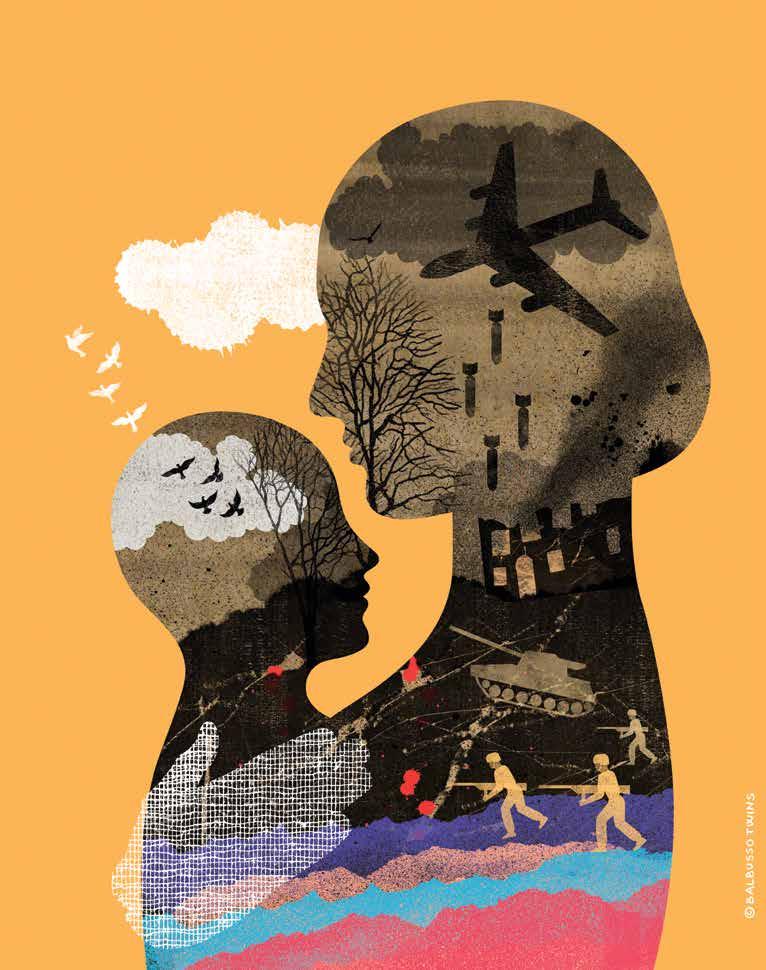
of the Israeli military in the occupied West Bank. “Is it logical to live in peace with people who are hating you, killing and doing anything to make you suffer every day for years? There is a justified anger that we have been feeling for years and it’s getting bigger each day. … I’m sure what you hear or see is not even 2 percent of what we suffer here.”
An Israeli woman I met at the camp, meanwhile, echoed the sentiments of many Jewish Americans I spoke with who felt that Israel had been unjustly cast as the aggressor when it was Hamas that ignited the current war with its October 7 terrorist attacks. “This is different than any other war Israel has been involved in,” she wrote. “After a week of shock, when the fear took over and the heart couldn’t carry this, we started seeing on social media people blaming Israel for what happened. … I’m willing to receive such clashes from Palestinians, but not from people who don’t live here.” She also voiced frustration over Palestinian leadership and said she wished “they would invest in the safety of their people before investing in ammunition to attack Israel.”
It made sense to me that the former campers, like my American friends with family ties to Israel and the Palestinian territories, were entrenched in grief that included rage toward the other side. What surprised me was that so many observers with no obvious connections to the conflict were opining against one side or the other while excusing either the terrorist acts that claimed the lives of 1,400 people or the bombing campaign that had killed thousands and thousands more (including more than 6,000 children).
As a mother who weeps for every dead child and bereaved parent, as an American of Jewish descent, and as an author who has reported on conflict and peace-building efforts in multiple countries, I am dismayed that so many of us worldwide — Jews, Muslims, Christians, Americans and global citizens
— have been legitimizing dehumanization, terrorism and war.
Excusing such violence or glorifying one side perpetuates the us-versus-them dynamic that brought this hell to humanity’s Holy Land. While mired in that mentality, all the questions we ask are just shades of the same dangerous mindset. Who is to blame and who is virtuous? Are you on my side or the enemy’s? How will our side win?
Those questions lead to the immoral argument that the slaughter of innocent civilians is a necessary means to an end. What if, instead, we dedicated ourselves
I AM DISMAYED THAT SO MANY OF US WORLDWIDE — JEWS, MUSLIMS, CHRISTIANS, AMERICANS AND GLOBAL CITIZENS — HAVE BEEN LEGITIMIZING DEHUMANIZATION, TERRORISM AND WAR.
to the belief that every child deserves to be safe and cared for and that every person is worthy of respect?
If we believe that every human life has value and that all children are our children, we must mourn every life lost and every child hurt.
Maybe all of us, not just those directly involved in the Middle East conflict, have a case of what researchers call “competitive victimhood.” This concept means that groups mired in conflict compete over which group has suffered worse abuses, steeping new generations in the idea that their own group has suffered more and is therefore entitled to act in certain ways. Here in the U.S., people who relate more to Palestinian suffering under occupation justify terrorist attacks, while those who
relate more to antisemitism and the Holocaust excuse the Israeli bombardment.
What’s clear is that so many people directly and indirectly involved in the conflict feel unheard, misunderstood and mistreated. That’s something we can change, no matter where we live. Research shows that being curious, asking questions and listening with the intention of learning instead of persuading decreases conflict and increases the chance of meaningful connection.
During these divisive times, we would all do well to take on the practice of listening to understand instead of listening to persuade. While empathic listening won’t turn fundamentalist militants into peaceniks, it can diffuse the widespread blame and resentment they feed on — especially if it ultimately leads to the resolution of grievances.
Those of us who believe that all people deserve life, liberty and the pursuit of happiness should also ask big questions that are aligned with that belief — and with the principles of love and tolerance espoused by the prophets of all three major world religions birthed in the Middle East.
We should dedicate ourselves to exploring questions like: “What would it take to ensure that every child is loved, valued and protected, no matter their race or nationality? What kind of nations, strategies, systems and habits would increase the likelihood of all people feeling heard and respected, and having the resources they need to thrive?”
If we focus on those questions, maybe we’ll eventually find answers that lead us out of endless cycles of entrenched conflict and competitive victimhood in which no one can possibly win. Until then, humanity will continue to lose.
For the thing which I greatly feared is come upon me, and that which I was afraid of is come unto me. — Job 3:25
Water the daisies. Watch the dirt turn dark with relief.
Love the bees. Like you, they have names and middle names, memories, deaths.
Open your hand to the tug and huff of toddlers, the macaroni on the table hardened to half-smiles, half-moons.
Watch the fish rise from the lake of childhood. See how they’re filled by the fruit of air.
Refine stillness. Let the good milk spill.
Praise each freckle, a star in a constellation of your vast fleshy galaxy.
Thank it — what eats your heart into grave simplicity, leaving it easy to pack, the pit of a plum.
Guard your true promise. Be lucid and wide. Animal-soft. Full as a bride.
What matters is nearly invisible. Search for it snout-like, close to the ground, bloodhound sharp and howl.
The alarm cuts the cold, dark air. It’s 4:30 a.m. As I snatch the phone from the bedside table and turn off the noise, I ask myself: Why am I doing this?
It’s Saturday, after all. I spent the previous five days jumping out of bed at 6 a.m. to coax my children from their comforters and repeatedly ask them to brush their teeth and get their shoes on before dropping them off at school and rushing through the workday until it’s time to do it all again. By Saturday, all I want to do is sleep in.
But skiing is my favorite thing to do. And doing it requires leaving our house in Denver by 5 a.m. on the weekends. If we leave later, we’re likely to get stuck in a traffic jam between two circles of Dante’s hell. So I grab my Thermos and usher my sleepy eight-year-old son out the door, reminding myself that leaving now will be well worth it once we’re carving turns on the Continental Divide.
We slide into our car seats and into the quiet pre-dawn twilight we go. My son dozes as we climb in altitude, and I contemplate the value of short-term sacrifice for long-term gain. My kids have precious few lessons in delaying gratification. Their questions are answered in seconds by Google, their hunger is relieved in minutes by grocery delivery and the photos they snap with my phone appear instantly.
As a kid, I complained about digging through library encyclopedias to find a fact. But I enjoyed the feeling of the paper and the musty smell of the pages. I liked browsing in music and book stores, discovering one artist in the search for another and striking up conversations while waiting to pay.
Driving through the mountains at 5 a.m., while the world is quiet, feels like a rare pause in our fast-motion life. A space that gives everything around it meaning and holds meaning itself.
Above our car, the sun breaks over the ridge and throws rays over the Rockies. I glance in the rearview mirror to tell my son, but he’s still sleeping peacefully, thick eyelashes closed against his cheeks and knees tucked into his chest. I marvel at the purplish-black sky and the sunlight that’s turning it blue — sunlight that has never before touched these hillsides.
My son stirs as I pull into the empty parking lot and stop by the chairlift, the first car to arrive. The full moon is still visible over the granite cliffs above us. My son climbs into the front seat, hands me his heavy “Harry Potter” book to read, and settles in beside me to listen to the story while we wait for the lodge to open. As I crack the book and find our place, I think that, sometimes, short-term sacrifice for long-term gain isn’t sacrifice at all.

 FARAH STOCKMAN
FARAH STOCKMAN
Shortly after Farah Stockman earned a degree in social studies from Harvard in the late 1990s, she moved to Kenya, where she’d done a study abroad program in college a few years before. She already had friends, connections and a heart for Kenyans. She moved there to help kids she’d seen living on the streets during her college years.
Two years in, she became a Nairobi correspondent for The New York Times, a foray into journalism that would change her life and lead her to become a keen observer of global events. As a journalist, she’s covered a variety of international stories, including the criminal trials that arose from genocide in Rwanda.
She notes proudly that the NGO she helped start, now called Jitegemee, is run by Kenyans.
Stockman, 49, has been a full-time journalist for roughly a quarter century, including 16 years as a columnist and editorial writer for The Boston Globe; she still lives in Cambridge with her daughter. Over the years, she’s reported from Afghanistan, Pakistan, Iran, South Sudan and Guantanamo Bay.
In 2016 — a big year in which she won
a Pulitzer Prize for her commentary at the Globe and had her daughter — she returned to The New York Times as a columnist.
She’s since written a book, “American Made: What Happens to People When Work Disappears.” It, too, is the story of people who struggle. She’s currently working on a new project about housing in Detroit.
WE LIVE IN A WORLD WHERE THERE’S SO MANY THINGS GRABBING PEOPLE’S ATTENTION THAT THE ONLY WAY TO CAPTURE YOU IS TO KEEP YOU IN A CONSTANT STATE OF OUTRAGE.
Deseret talked to her about why politics shouldn’t be one’s identity.
I think polarization is when people identify themselves as not the other. If you’re for it, I’m against it. If that’s you, then you are
basically letting somebody else have power over you by whatever they’re for, you’re against.
I see examples all over the place. My daughter has been having some challenges learning to read. We found this literacy teacher who was great over the summer, and she was furious that science-based methods weren’t being used to teach kids to read. I later heard that because George W. Bush wanted those methods under No Child Left Behind, the teachers union didn’t want those methods. It got political; it had nothing to do with the methods.
It had to do with not wanting No Child Left Behind and not liking George Bush. You can come up with 100 examples of that when it comes to (Donald) Trump. I think Trump is an awful person, but it doesn’t mean everything he did was wrong. There were things he did that needed to be done and even Biden is doing them.
At a certain point, we lose. We just do ourselves such a disservice when we start defining politics in this tribal way.
WHAT DID YOU LEARN ABOUT IDENTITY WRITING THAT BOOK?
I think of class as an identity and a
culture and that is rarely talked about on the left. That’s starting to change. But for a long time, there were these two pillars where you either cared about race or you cared about class. A lot of the talk surrounding the rise of Trump was about how he was talking about race and his policies were “racist” and, therefore, these white working-class people who supported him were all racist. There was a lot of that in the run-up to his election. I wanted my book to look more closely at that, and why working-class people were flocking to him, which was more complicated. Race was part of the story. But there’s more.
I think now we’re seeing the rise of unions and more conversation on the left about working-class issues, but for a long time, liberals were people who came from college and had sort of forgotten about some of these working-class identity issues. I think that’s part of why they lost ground in some places.
I wrote about a factory in Indianapolis. Indiana, that used to be a hotbed of unions. They were blue-collar people who elected folks that believed in a labor movement, and some of them came to feel that the Democratic Party had abandoned them, specifically when Bill Clinton started supporting NAFTA
Support of NAFTA was absolutely instrumental in some places in turning people away from the Democratic Party. They were so mad at Bill Clinton all these years later that they would never have voted for his wife.
They had personal stories of factories closing down. I interviewed two guys back to back. Both had lost not one but two factory jobs after their plants closed. If you know what a factory job used to be like, you work your way up and pay your dues, then by the time you’re in your 40s or 50s, you’ve made it. That’s the life their fathers led. But they didn’t get to live that life. They were still working the night shift at age 48,
50, because when you get rehired, you start from the bottom, you lose all your seniority. They were like men who are adrift. They couldn’t live up to the standards their fathers-in-law or their fathers had set. And they were mad.
The language of the Democratic Party was about going to college. It wasn’t about bringing back manufacturing. Now it is. Biden talks about bringing back manufacturing a lot and he’s done a lot to try to make that happen. But I think Trump did a lot to make that part of the narrative. A lot of these guys voted for (Barack) Obama in 2008. What did Obama promise to do? Renegotiate NAFTA. So, you know, it’s identity, blue-collar identity factory worker. But it’s bigger than that and it does tie into politics and policy.
I was hoping we would see that under Biden, because he has adopted a lot of the blue-collar appeal, the stuff that Trump was saying, and he’s actually gone a step further.
It was Trump’s trade rep, a guy named Bob Lighthizer, who renegotiated NAFTA and Biden’s trade negotiator has taken that agreement and is implementing it.
There’s no daylight between Trump and Biden when it comes to trade. Their people are secretly agreeing. When you get to the voters, are they still hair-on-fire polarized opponents? I don’t know. I see a lot of overlap. But when you get to the political rhetoric, it disappears. You don’t hear Biden saying, “Yes, Trump did this right and I continued it.” Instead, they criticize. Part of that’s politics, I think.
We live in a world where there’s so many things grabbing people’s attention that the only way to capture you is to keep you in a constant state of outrage. People don’t want to hear Trump did good things on this or that. Or, if you’re a Trump supporter, that Biden is doing exactly what you said you wanted.
It’s similar in that when you hear them talk offline, they say things like, they’re surprised that things are more collegial. But they play to the cameras and they play to their base who hates the other side.
In the name of absolute transparency, you want these cameras, but if it causes people to just perform for the crowd, maybe that’s not helpful.
WHAT DID YOU LEARN FROM AN UNLIKELY FRIENDSHIP OF TWO PEOPLE ON THE U.S. COMMISSION ON INTERNATIONAL RELIGIOUS FREEDOM?
That was a space where you had Democrats and Republicans by design, and where the people working in that space decided to make it work. I guess that committee had had problems in the past with people feuding instead of trying to find areas where they could work together.
I think if you get to know people as human beings, you can better understand the way they see things. You may not ever agree with them, but at least you might be able to see how they could have that point of view.
I worry that today we’re so self-segregated, where we live in communities where you don’t necessarily see people who have different political views, or who are of different education levels. So you might just dismiss their entire point of view, because they’re the other or support the other candidate. You never understand or hear a good-faith argument about why they think the things they think.
Don’t give the other side the power. If you define your identity, even unconsciously, as I’m for whatever they’re against, then you’re giving them the power to define you. And that’s just silly. It ruins politics because it means strange bedfellows can’t get together and do things that they do agree on, because they’re not supposed to be sitting at the same table.
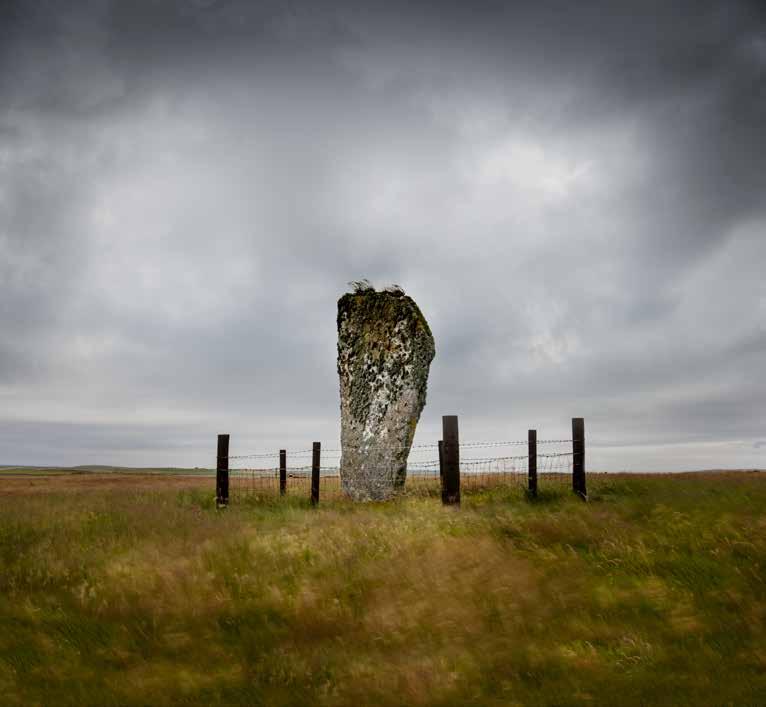




Winter is magical in southern Utah. Come hike Kanab’s snowy red rocks, tour Best Friends Animal Sanctuary, and enjoy a very warm welcome at Best Friends Roadhouse & Mercantile for both you and your pet. Don’t have a pet? We’re happy to arrange a sleepover with a Sanctuary dog, cat or bunny!
Book your stay at bestfriendsroadhouse.org or 435-644-3400.

Best of State Utah Awards
Best Motel, 2022 & 2023
Best of the Best in Hospitality, 2023




Adventure inspires us to see the world and make it better. That’s why we create sustainably minded apparel & packs designed to get you out there, and dedicate at least 1% of our revenue to help communities experiencing poverty.